Thai Alphabet Drawing by Grandpa John, Grandson Kai, and Daddy Jim Part 5 (Thai alphabet from letter #1 to letter #44)
 Sukhothai Historical Park and King Ram Khamhaeng Inscription
Sukhothai Historical Park and King Ram Khamhaeng Inscription
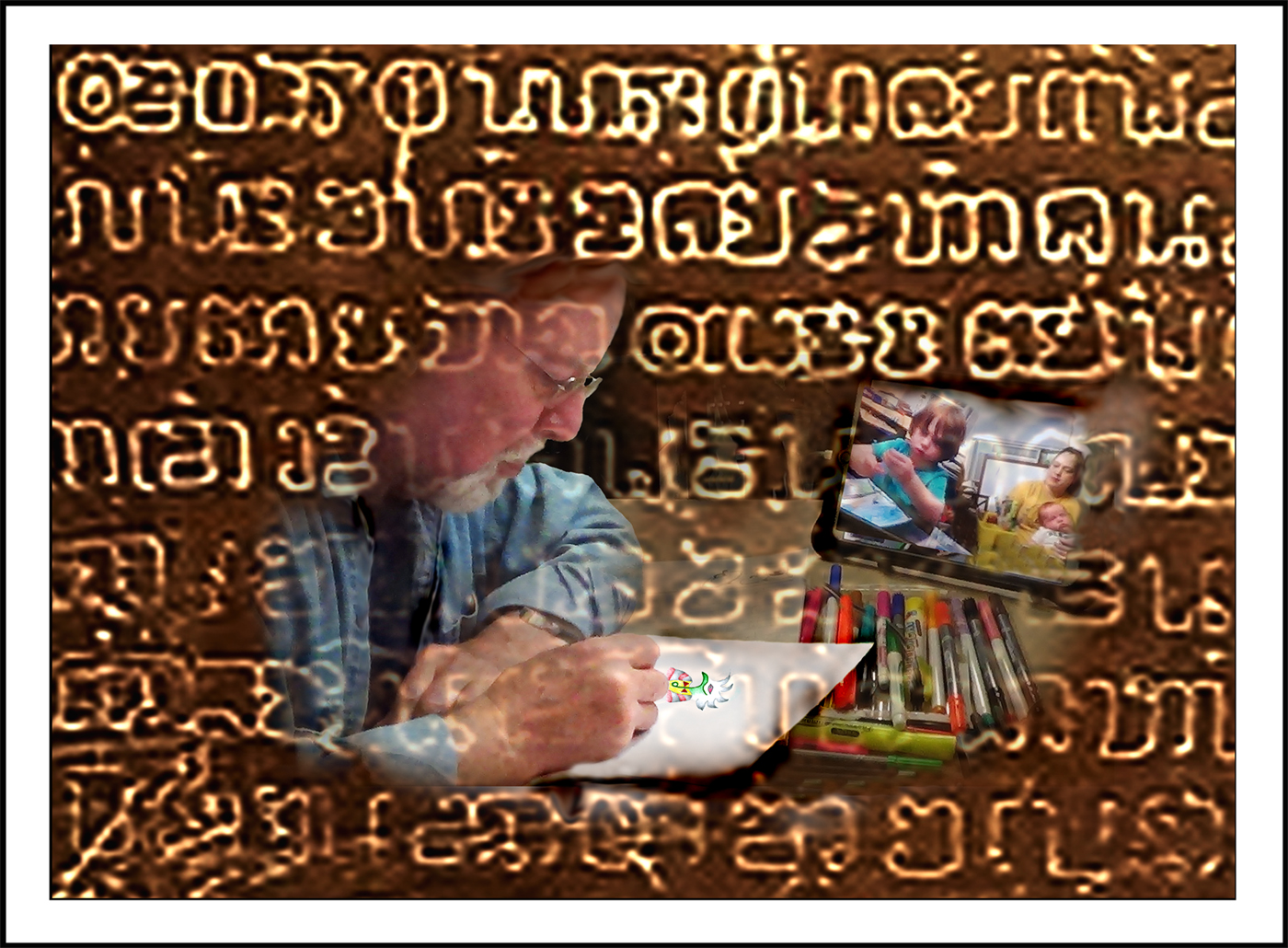 Ing’s Artwork: Thai alphabet drawing by Grandpa John & Grandson Kai and King Ram Khumhaeng Inscription
Ing’s Artwork: Thai alphabet drawing by Grandpa John & Grandson Kai and King Ram Khumhaeng Inscription
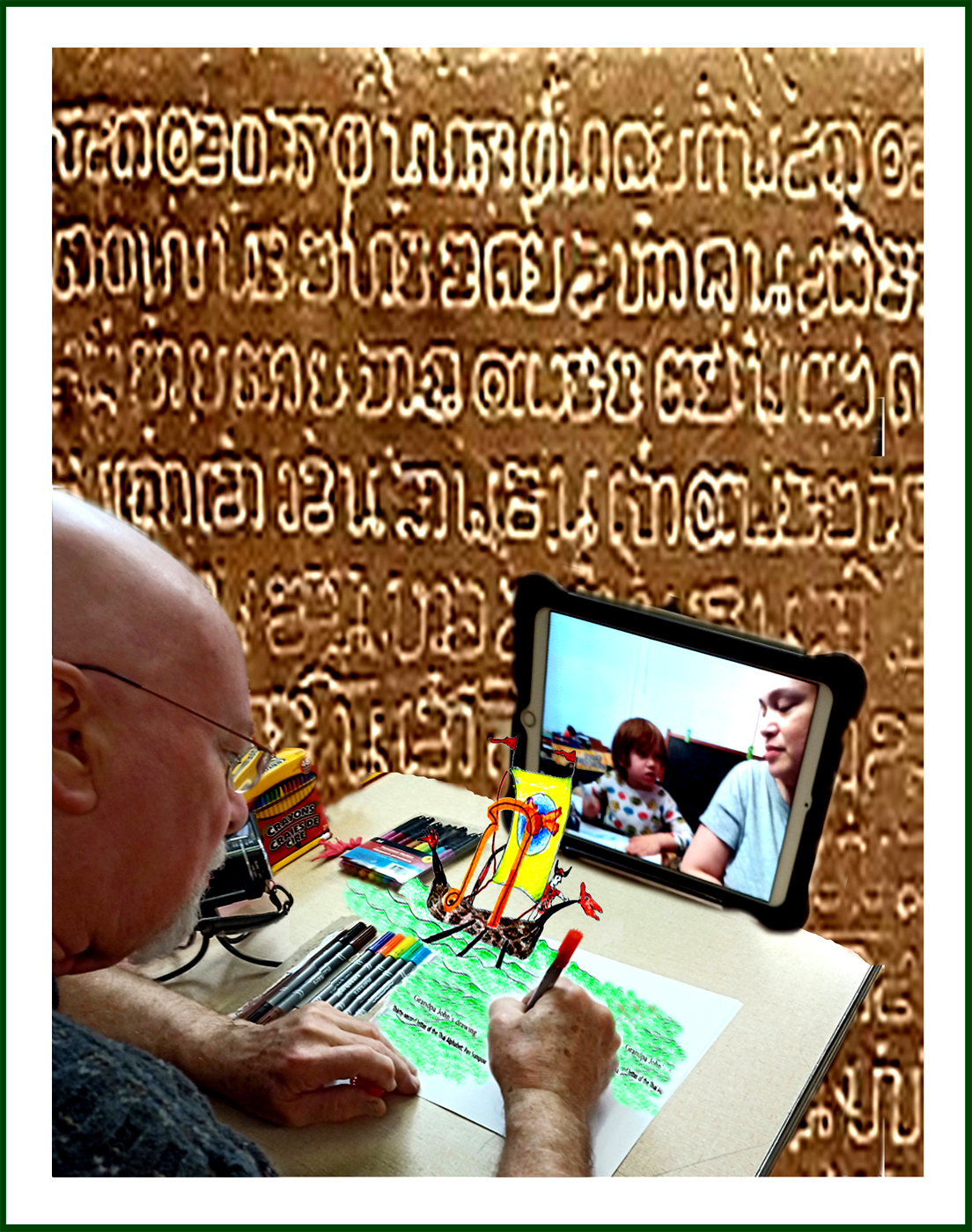 Ing’s Artwork: I combined, John, Kai, & Mali, with King Ram Khamhaeng Inscription while they were in the process of drawing the Thai alphabet. I integrated one of John’s drawings of character # 32, Pau Sumpow, into the work. The result is the artwork above.
Ing’s Artwork: I combined, John, Kai, & Mali, with King Ram Khamhaeng Inscription while they were in the process of drawing the Thai alphabet. I integrated one of John’s drawings of character # 32, Pau Sumpow, into the work. The result is the artwork above.
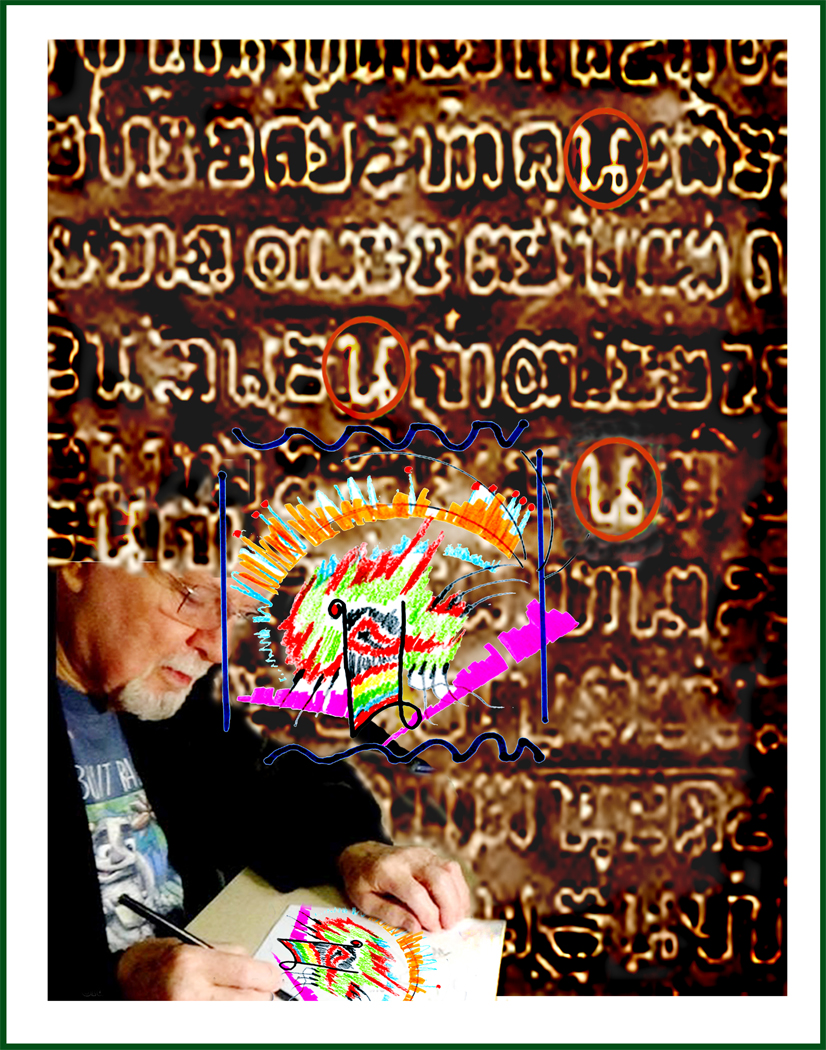 Ing’s Artwork: John was working on the Thai alphabet, the letter # 27, Nau Nu. I noticed that in the King Ram Khamhaeng Inscription, quite a few uses of the letter # 27, Nau Nu. The Thai alphabet is derived from the Old Khmer script. The letters have been modified and simplified, becoming the modern Thai alphabet. But I notice that the letter # 27, Nau Nu was not modified or simplified. It remains unchanged as it is seen in my artwork above.
Ing’s Artwork: John was working on the Thai alphabet, the letter # 27, Nau Nu. I noticed that in the King Ram Khamhaeng Inscription, quite a few uses of the letter # 27, Nau Nu. The Thai alphabet is derived from the Old Khmer script. The letters have been modified and simplified, becoming the modern Thai alphabet. But I notice that the letter # 27, Nau Nu was not modified or simplified. It remains unchanged as it is seen in my artwork above.
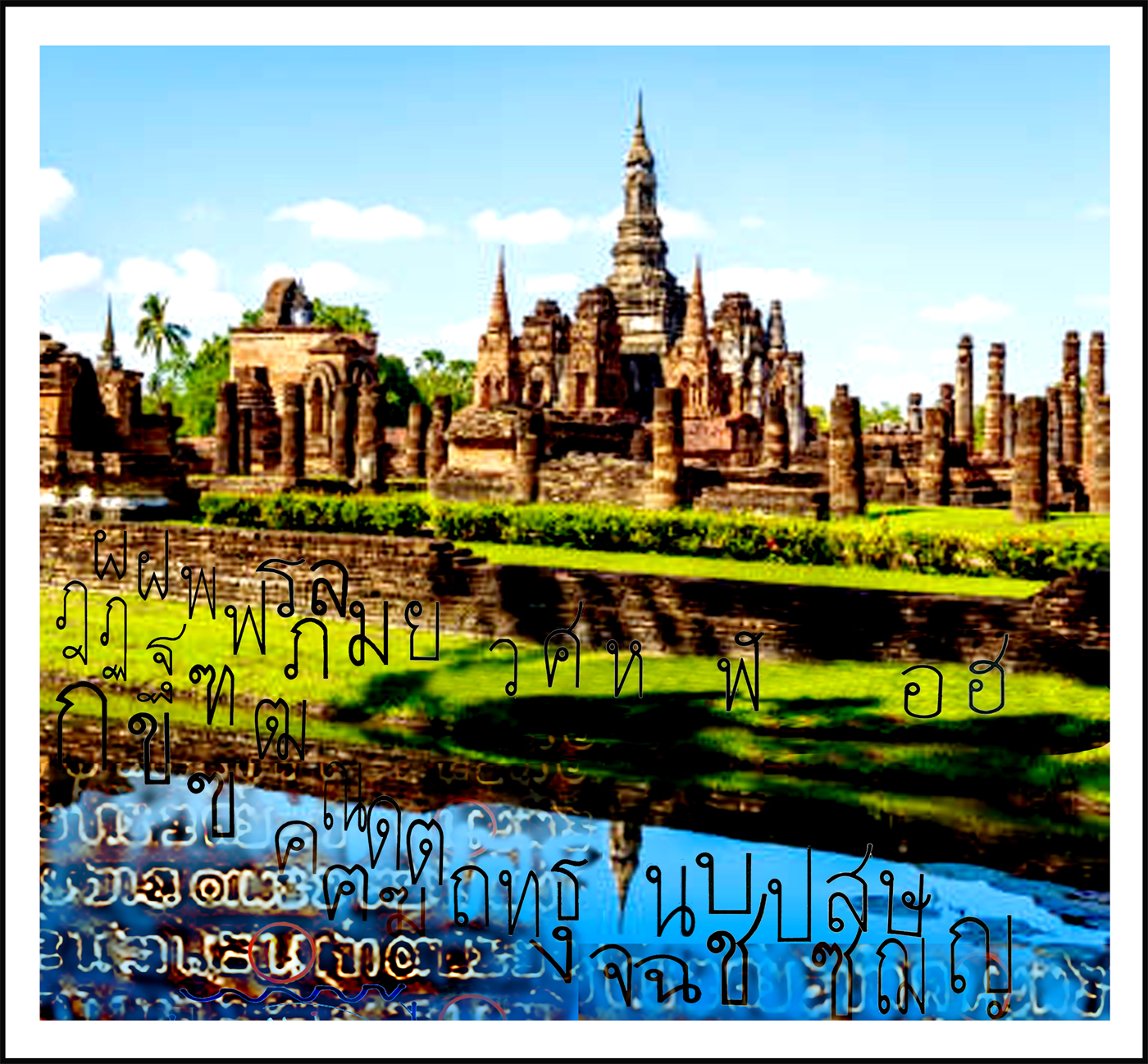 Sukhothai Historical Park, Ram Khamhaeng Inscription and Modern Thai Alphabet
Sukhothai Historical Park, Ram Khamhaeng Inscription and Modern Thai Alphabet
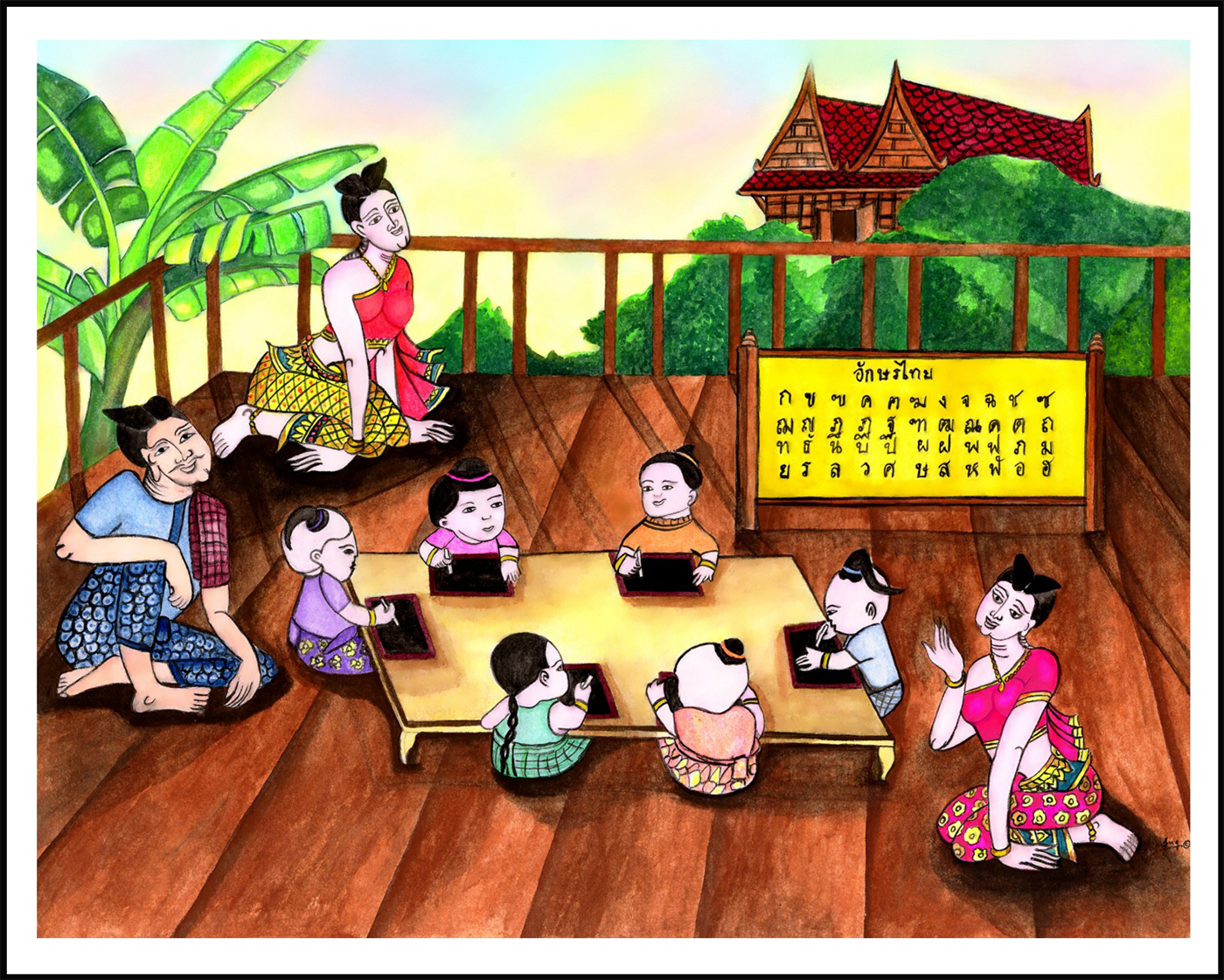 Studytime For Thai Children: Ing-On Vibulbhan-Watts’ Artwork, I produced this artwork in 1997.
Studytime For Thai Children: Ing-On Vibulbhan-Watts’ Artwork, I produced this artwork in 1997.
Thai Alphabet Drawing by Grandpa John (77 years old), Grandson Kai (4 years old), and Daddy Jim
Organized by Grandma Ing (Ing-On Vibulbhan-Watts)
Technical Support by Mommy Mali, Daddy Jim and almost two months old brother Bodhi, started on Wednesday, April 22, 2020, Grandpa John and Grandson Kai communicated via Face Time through iPad during the lock-down from the pandemic of COVID-19 (coronavirus)
Thai Alphabet Drawing by Grandpa John, letter #1 to letter #44
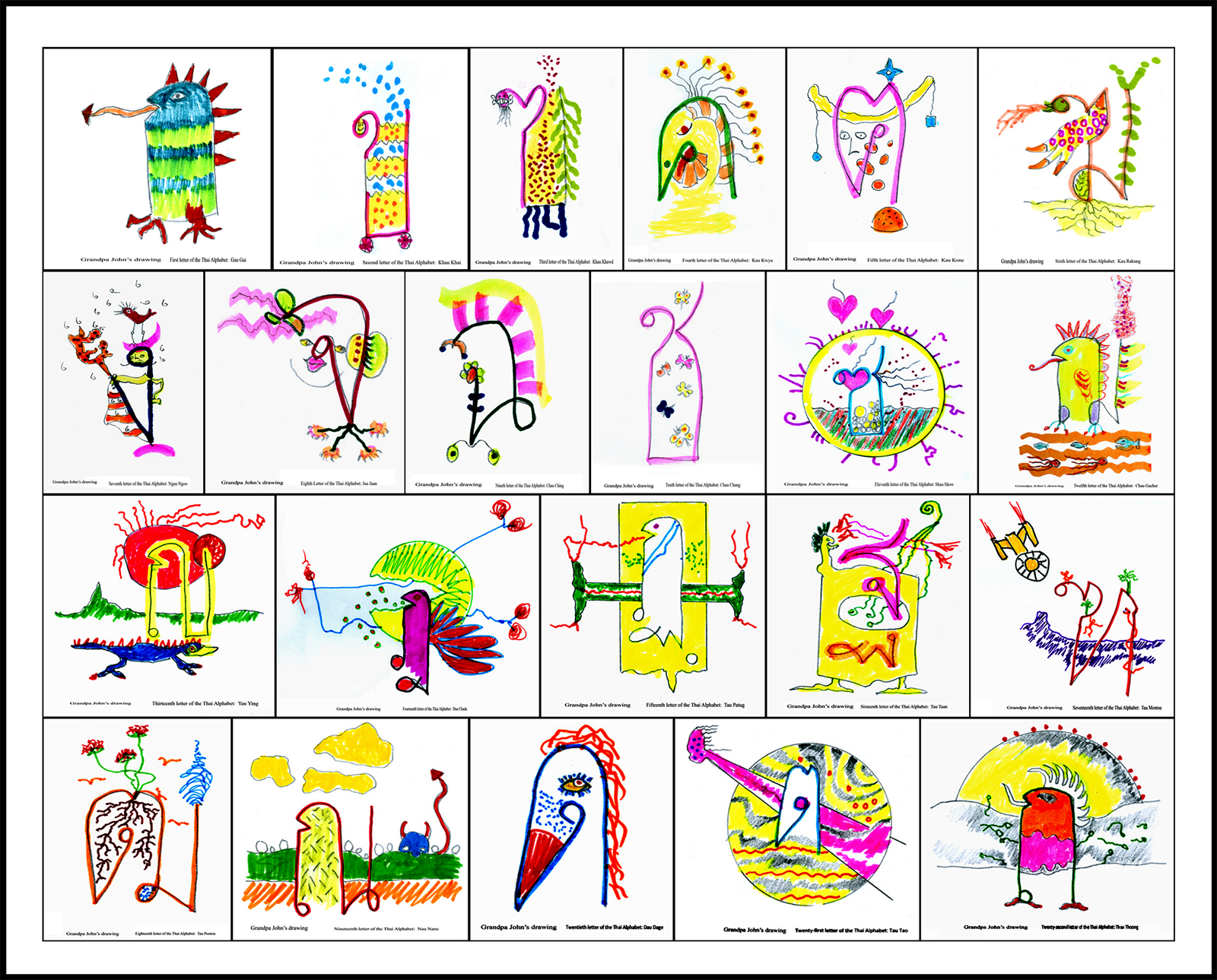
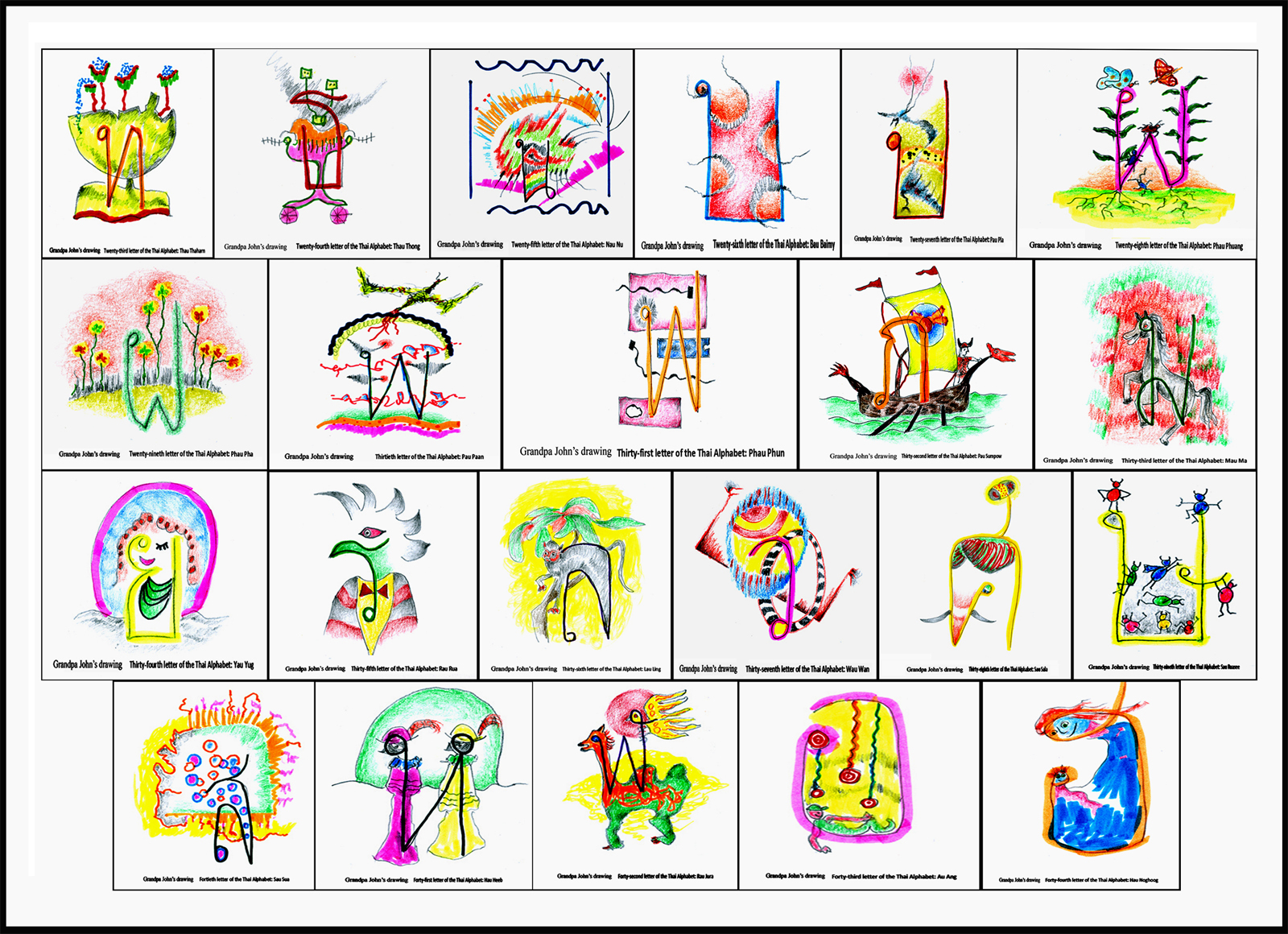
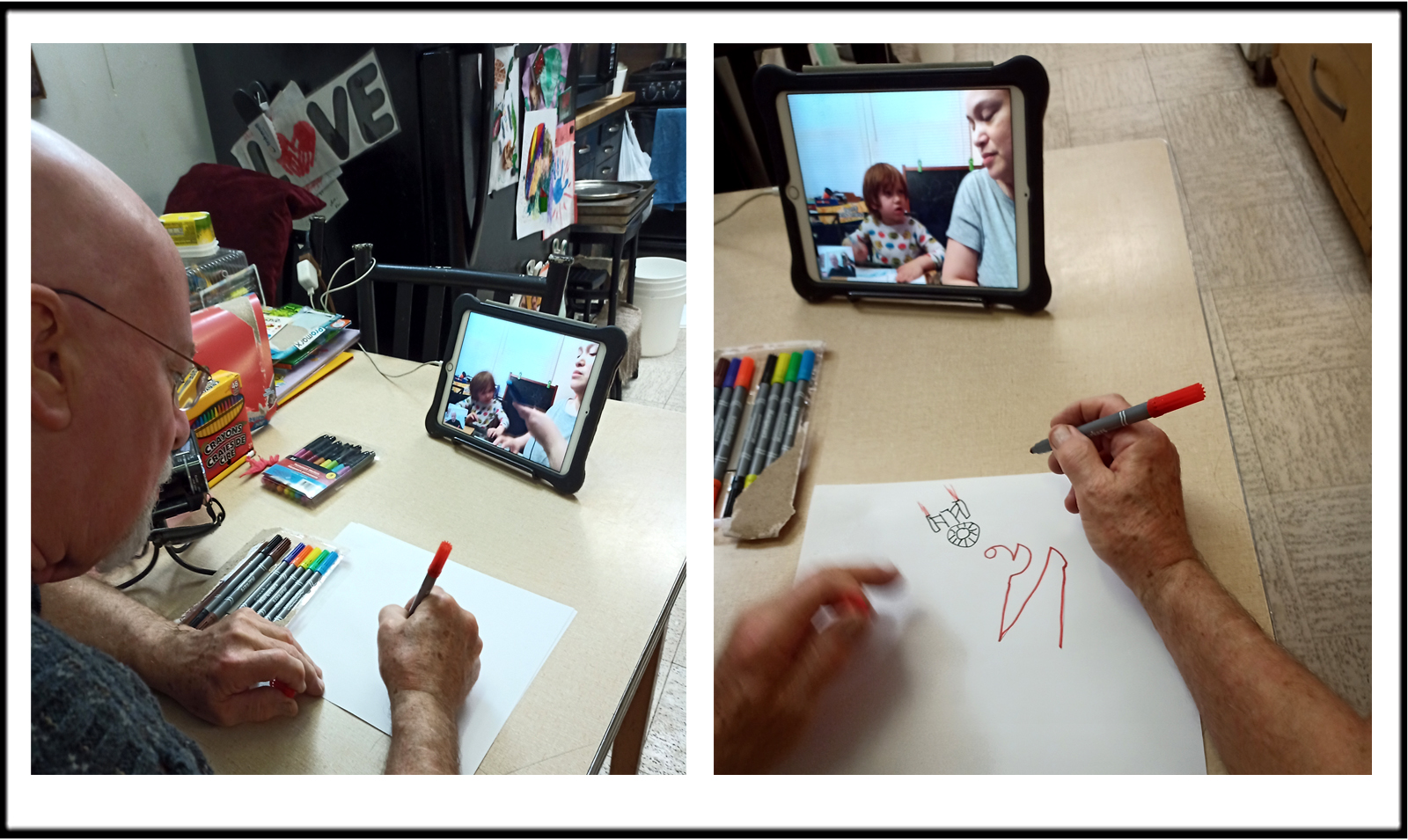
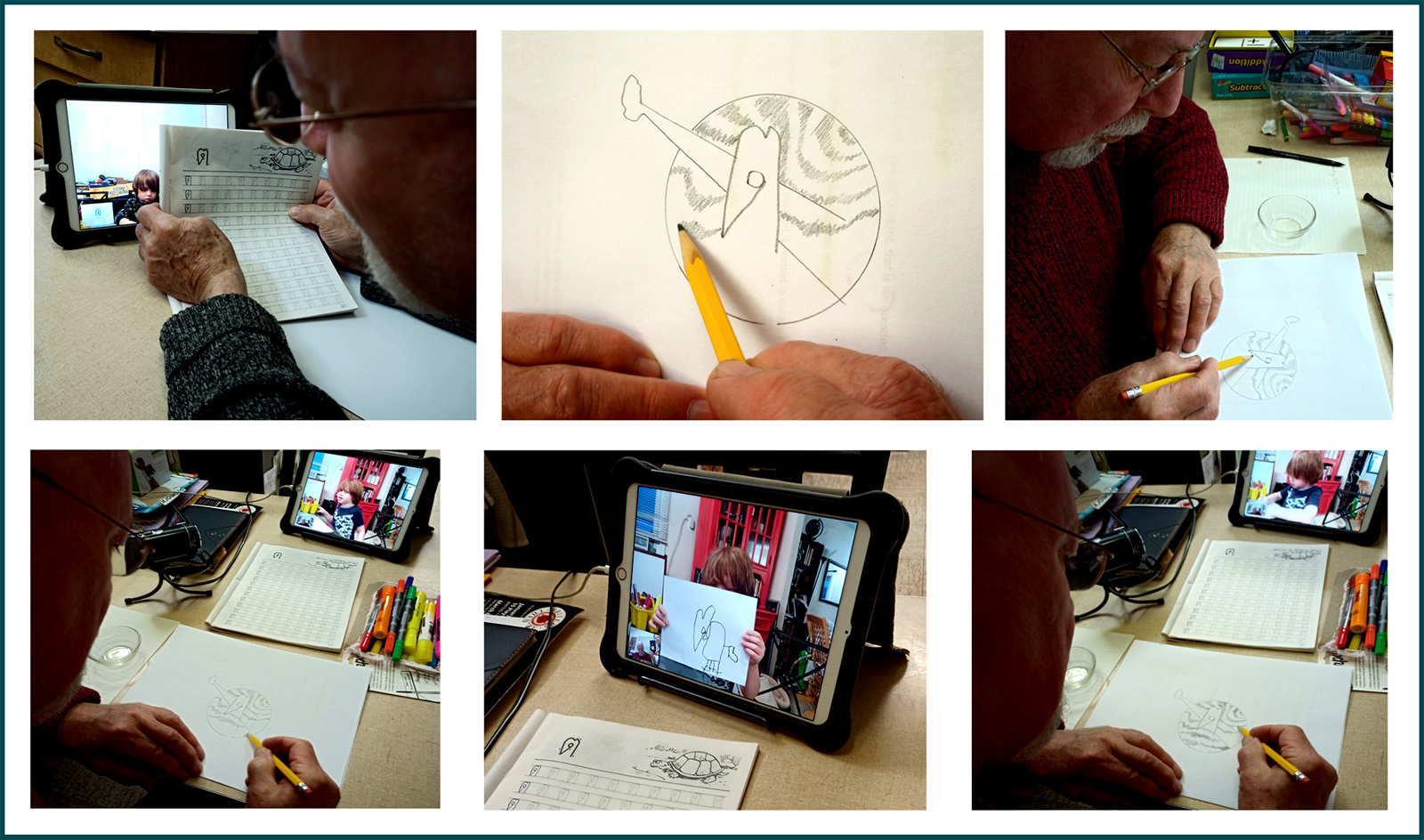
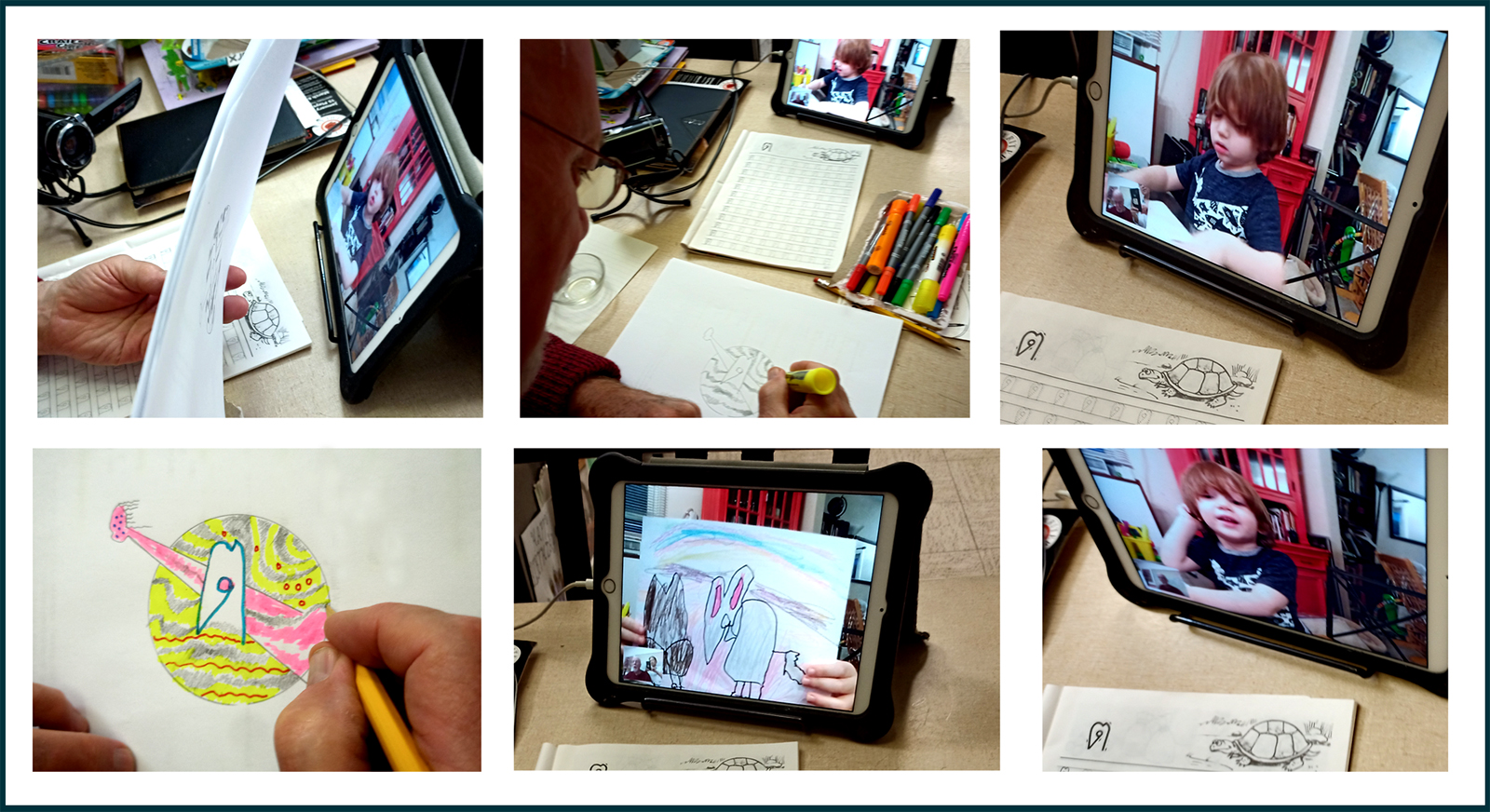
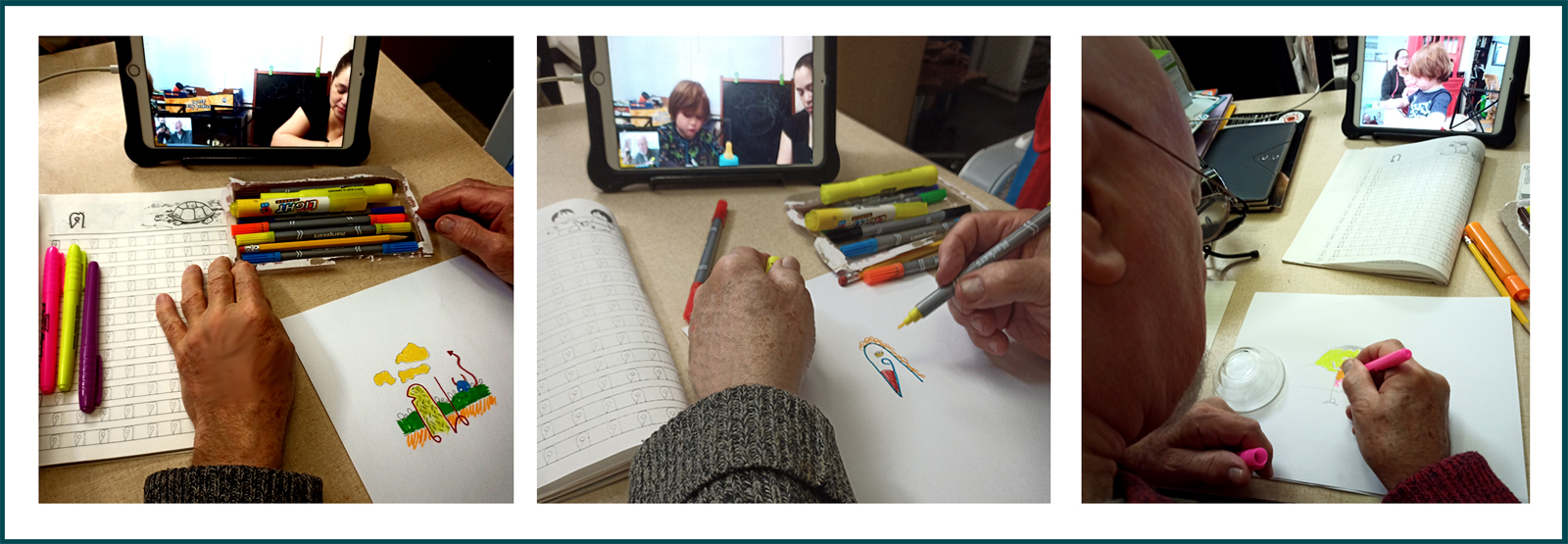 Thai Alphabet Drawing by Grandson Kai, letter #1 to letter #44
Thai Alphabet Drawing by Grandson Kai, letter #1 to letter #44 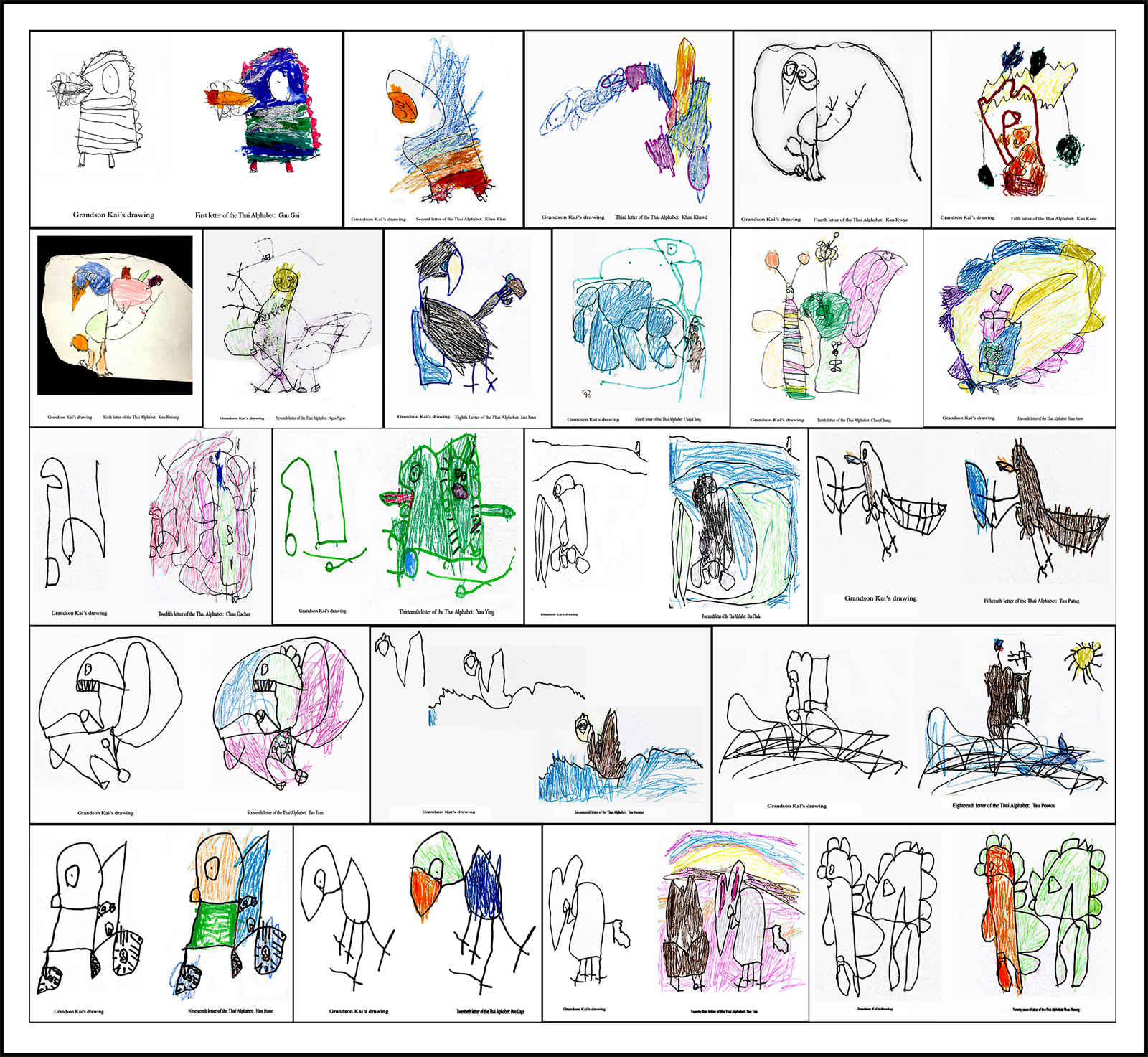
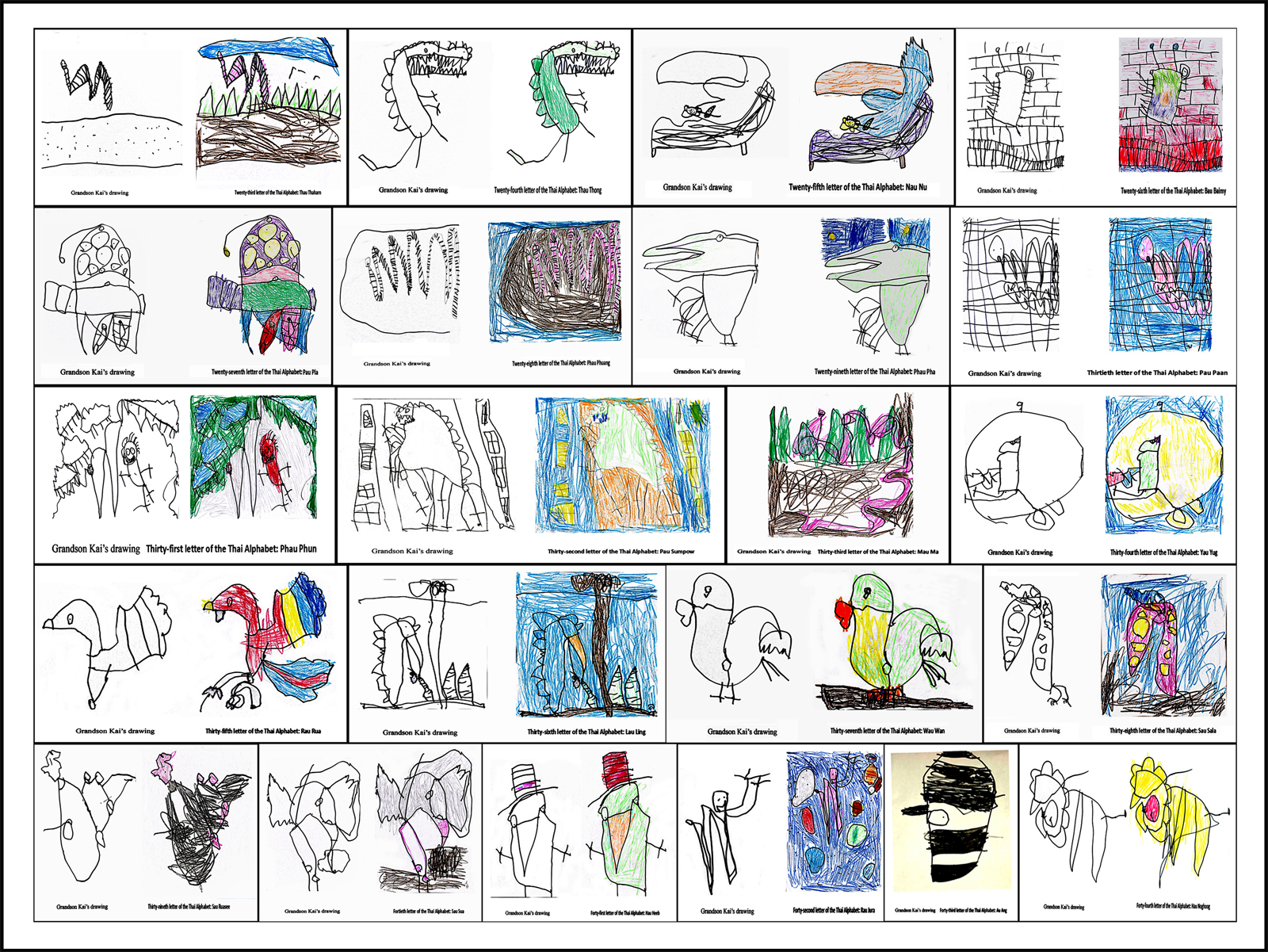
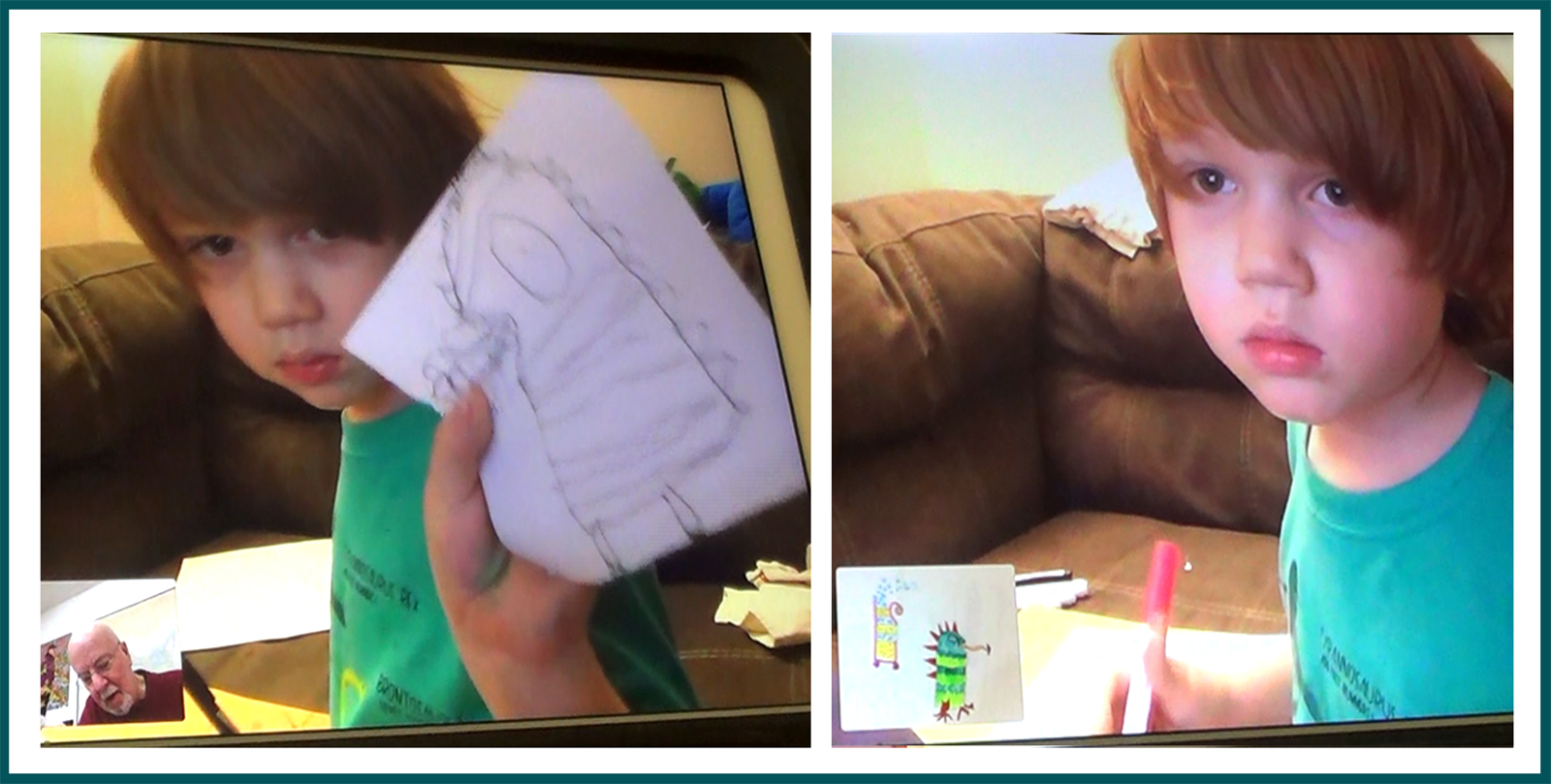
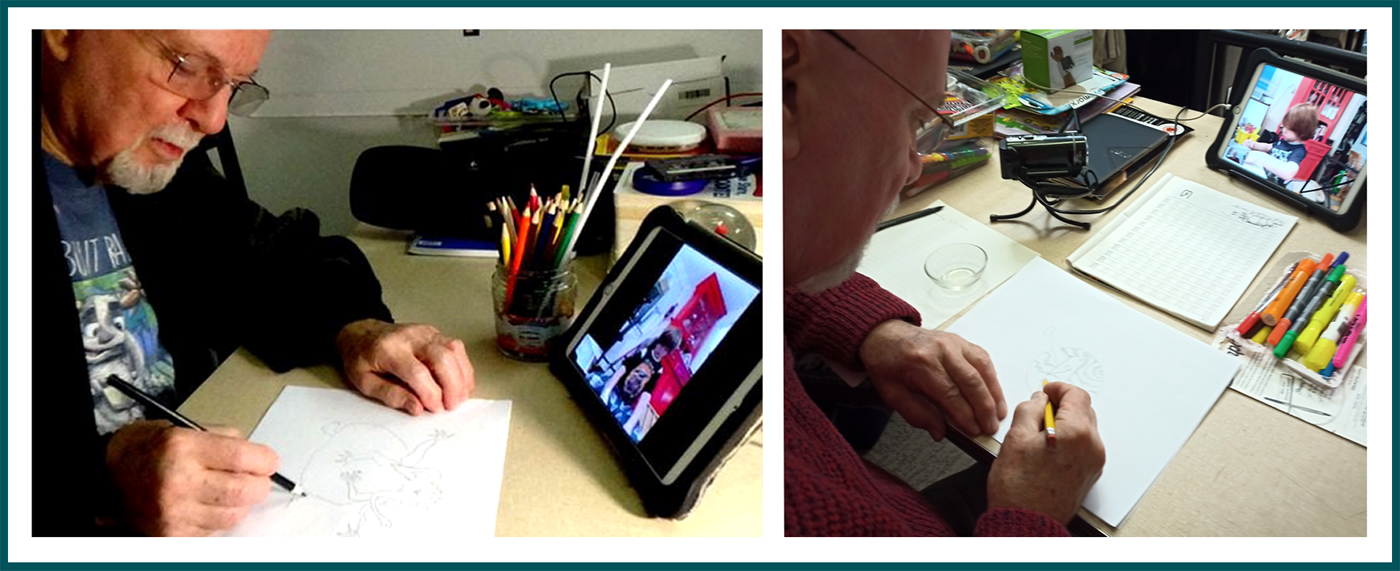


 Thai Alphabet Drawing by Daddy Jim, letter #44
Thai Alphabet Drawing by Daddy Jim, letter #44
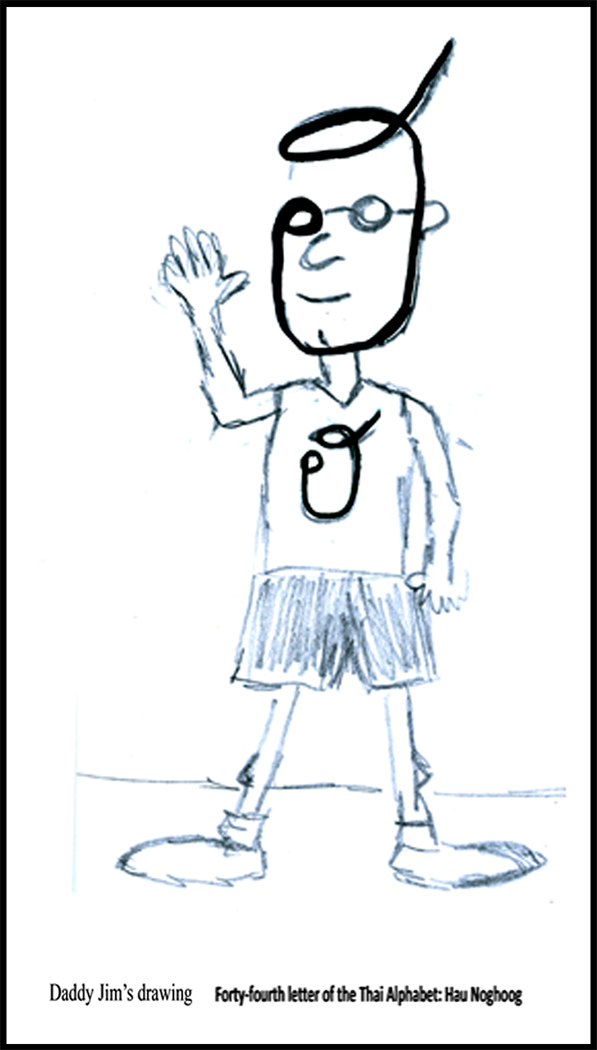

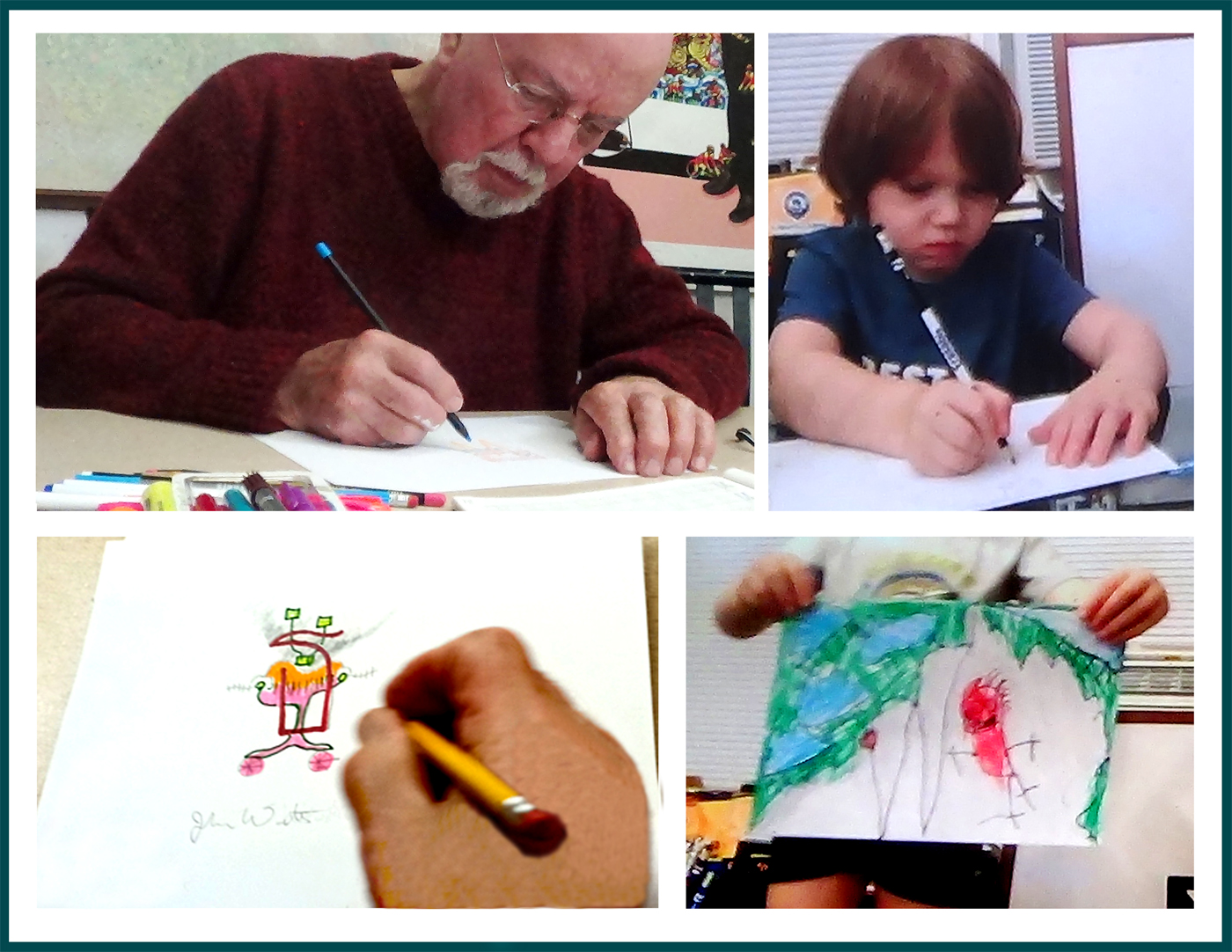 Thai Alphabet, letter #1 to letter #44
Thai Alphabet, letter #1 to letter #44
There are 44 letters in Thai Alphabets. In part 5 I combined all of 44 letters together from both Kai and John’s drawings, including 44 letters of Modern Thai alphabet.
John and Kai enjoyed drawing Thai characters using their imaginations in composing the letters. Mommy Mali was holding her new born 2 months old baby, Bodhi, to supervise Kai with his playful and loving drawing activity. I participated by taking pictures and video of the event. Daddy Jim, did one Thai drawing of the letter #44, Hau Noghook and also entertained the troops by playing music with his loving of Guitar performance. We were all happy spending time in the evening after a full belly from the home-made meal. Hopefully, little bodhi heard our conversation of loving and laughing. We managed to turn the COVID – 19 locked down in to a more useful and entertaining time.
For me, personally, I was so glad to see the Welshman, John, and our American grandson Kai, invent characters that are unique and special to me. As a Thai person it brought a sentimental reminder of my own native Thai language.
I hope that Thai people who view this Thai alphabet will smile because of the unique playfulness of the Thai characters created in John and Kai’s drawings. Each culture is unique, and when we come together, we can appreciate each other, bringing harmony and peace to families, communities and the world.
Ing-On Vibulbhan-Watts, Wednesday, June 29, 2022
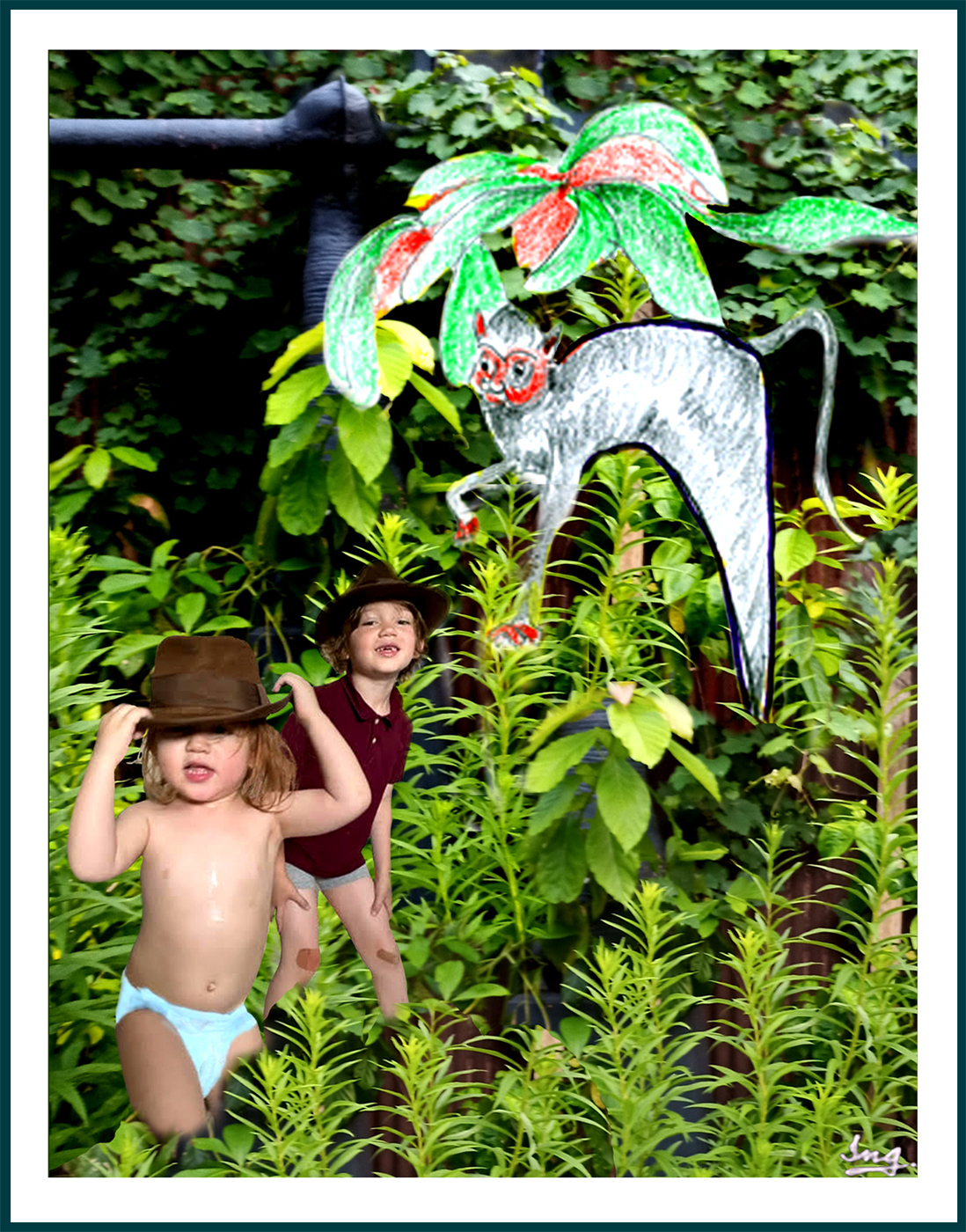 Three Monkeys in the Jungle: Kai and Bodhi on Saturday, June 18, 2022, John’s drawing Thai letter # 36, Lau ling and his sculpture in our garden
Three Monkeys in the Jungle: Kai and Bodhi on Saturday, June 18, 2022, John’s drawing Thai letter # 36, Lau ling and his sculpture in our garden
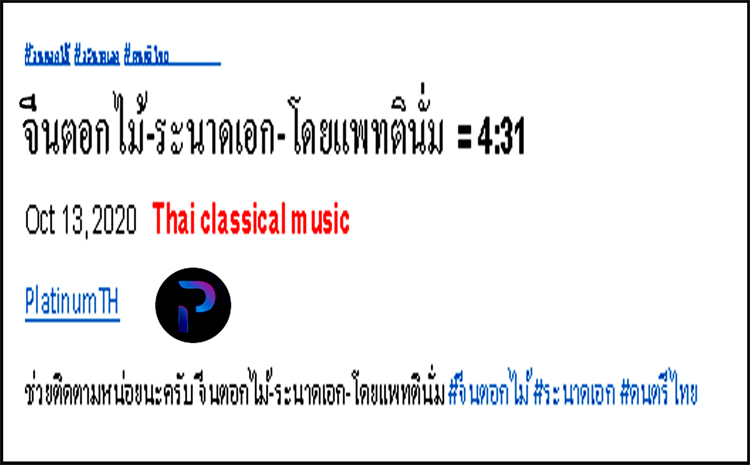 Oct 13, 2020 Thai classical music
Oct 13, 2020 Thai classical music
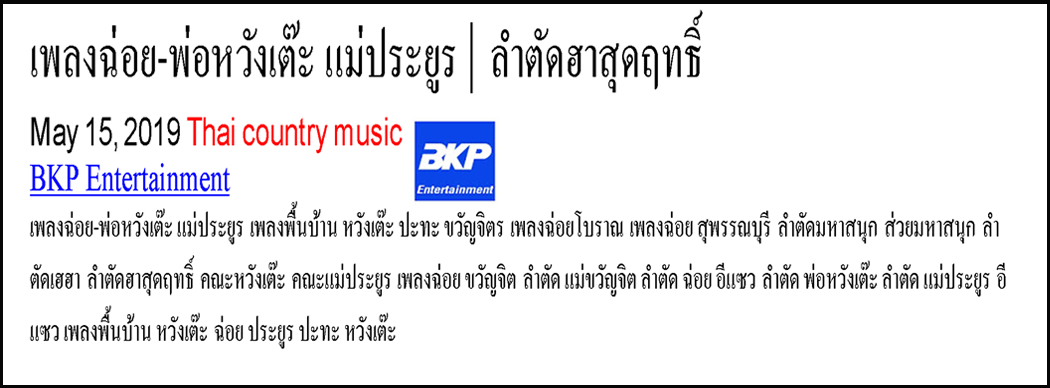 May 15, 2019 Thai country music
May 15, 2019 Thai country music
Thai Ceramics
Thai ceramics refers to ceramic art and pottery designed or produced as a form of Thai art. The tradition of Thai ceramics dates back to the third millennium BCE.[1] Much of Thai pottery and ceramics in the later centuries was influenced by Chinese ceramics, but has always remained distinct by mixing indigenous styles with preferences for unique shapes, colors and decorative motifs.[1] Thai pottery and ceramics were an essential part of the trade between Thailand and its neighbors during feudalistic times, throughout many dynasties.
Thai ceramics show a continuous development through different clay types and methods of manufacturing since the prehistoric period and are one of the most common Thai art forms. The first type of Thai ceramics ever recorded was the Ban Chiang, dating back to about 3600 BCE. Sukhothai ware, the most famous style of Thai ceramics, is exported to many countries around the world today.
Medieval Thai wares were especially influenced by Chinese celadons, and later by blue and white porcelain.
Painted ceramic bowl with base, Lopburi 2300 BCE. Bang Chiang culture.
Gryffindor – Own work
Bowl with base. Lopburi 2300 BCE. Thailand, Bang Chiang culture. 210-200 BCE. Ceramic, painted. 132 cm. Located in the Museum für Indische Kunst, Berlin-Dahlem. Painted ceramic bowl with base, Lopburi 2300 BCE. Bang Chiang culture.
Gryffindor – Own work
Bowl with base. Lopburi 2300 BCE. Thailand, Bang Chiang culture. 210-200 BCE. Ceramic, painted. 132 cm. Located in the Museum für Indische Kunst, Berlin-Dahlem.
The earliest trace of Thai ceramics ever recorded is the Ban Chiang, said to date back to about 3600 BCE and found in what is the present day Udon Thani Province, Thailand. The ceramics were earthenware. Common forms of excavated artifacts were cylinders and round vases. The early pots were undecorated while the later ones were carved with geometric patterns and swirling designs. Each of the pieces was also found to have axial perforations which showed that people at that time had knowledge of using tools.
The second important prehistoric Thai ceramics is the Ban Kao which was in Kanchanburi Province. Unlike Ban Chiang, Ban Kao’s wares were thinner and had a glossy surface finish. What is interesting is that there are a wide range of forms and shapes, some of which are similar to bronze wares of Han China. After the prehistoric period the kingdom that emerged at about 1st century CE was the Mons. They made considerable ceramics uses in relation to religious symbols in the form of figurines. Ceramics were also used as a building decorations.
Following the Mons were the Khmers who appeared in about the 9th century CE Little is known about Khmer ceramics because archaeological research has focused on their great achievements in stone and bronze sculpture. The ceramics of Khmer era are quite interesting. Many of the designs include parts from animal and have a dark brown glaze finish.
The best known of all traditional Thai ceramics are those from Sukhothai and Sawankhalok. Sukhothai wares were generally treated with a creamy white slip and decorated in black with an opaque or greenish glaze. The most famous Sukhothai kiln is the Si Satchanalai. Examples of the wares can be found in many leading museums of the world. Sawankhalok products tend to be more finely made than the Sukhothai ones. These products are incised and often include animal shapes. Some of the original examples can be found in many private collections and museums today. Ceramics based on these styles are still made at present and widely exported, particularly to the Philippines and Indonesia.
Si Satchanalai[edit]
 Box with a lid. Si Satchanalai, 13th-14th century
Box with a lid. Si Satchanalai, 13th-14th century
British_Museum_Asia_1.jpg: Gryffindor derivative work: Jbarta (talk) – British_Museum_Asia_1.jpg
Box with a lid. Sawankalok, northern Thailand. 13th-14th century CE. Given by H. Bergen, Esq. OA 1923.2-12.1. British Museum.
One of the most famous examples of Thai pottery are from the Sukhothai period from the kilns of S(r)i Satchanalai, which is around Sawankalok in north-central Thailand. This period started in the 13th century CE and continued until the 16th century. The art reached its apex in the 14th century. Examples of Si Satchanalai can be found in many leading museums of the world.
Sukothai traded with these precious ceramics with its neighbours. The transport was often by ship across the oceans. A number of Si Satchanalai ceramics in excellent condition have been excavated in ship wrecks in the Gulf of Thailand, the Andaman Sea and other waters.
18th century to present day[edit]
Bangkok, the capital of Thailand, was founded in 1782 and is represented by the Bencharong and Lai Nam Thong wares. It would seem that Bencharong ceramics first made their appearance during the final phases of the Ayutthaya period in the 18th century, while the Lai Nam Thong wares developed during the 19th century. Bencharong, meaning five colours in Thai, is a hand painted enamel over glazed ceramic. Bencharong was originally made in China and exclusively designed by Thai artists for Thai royals during the 18th – 19th centuries. Lai Nam Thong is an exclusive version of the Bencharong using gold embellishment instead of gold enamel. Both of these wares can be found in private collections of well-to-do citizens.[2]
The Southeast Asian Ceramics Museum was opened in 2005 in Bangkok.
| Ban Chiang | 3400 BCE – 200 CE | spoons, beads, jars, vessel, pots, and vases. Some decorated with simple geometric patterns. Unglazed – red clay, some red on buff painted [3] |
| Hariphunchai, 200 CE – 1000 CE | figurines, votive tablets and building decorations. Unglazed – red clay |
| Sukhothai, 14th century – 16th century | animal figurines, bowls, and boxes. Opaque or greenish glazed – creamy white slip – fine clay |
| Sukhothai, 14th century – 16th century |
| Sukhothai, 14th century – 16th century |
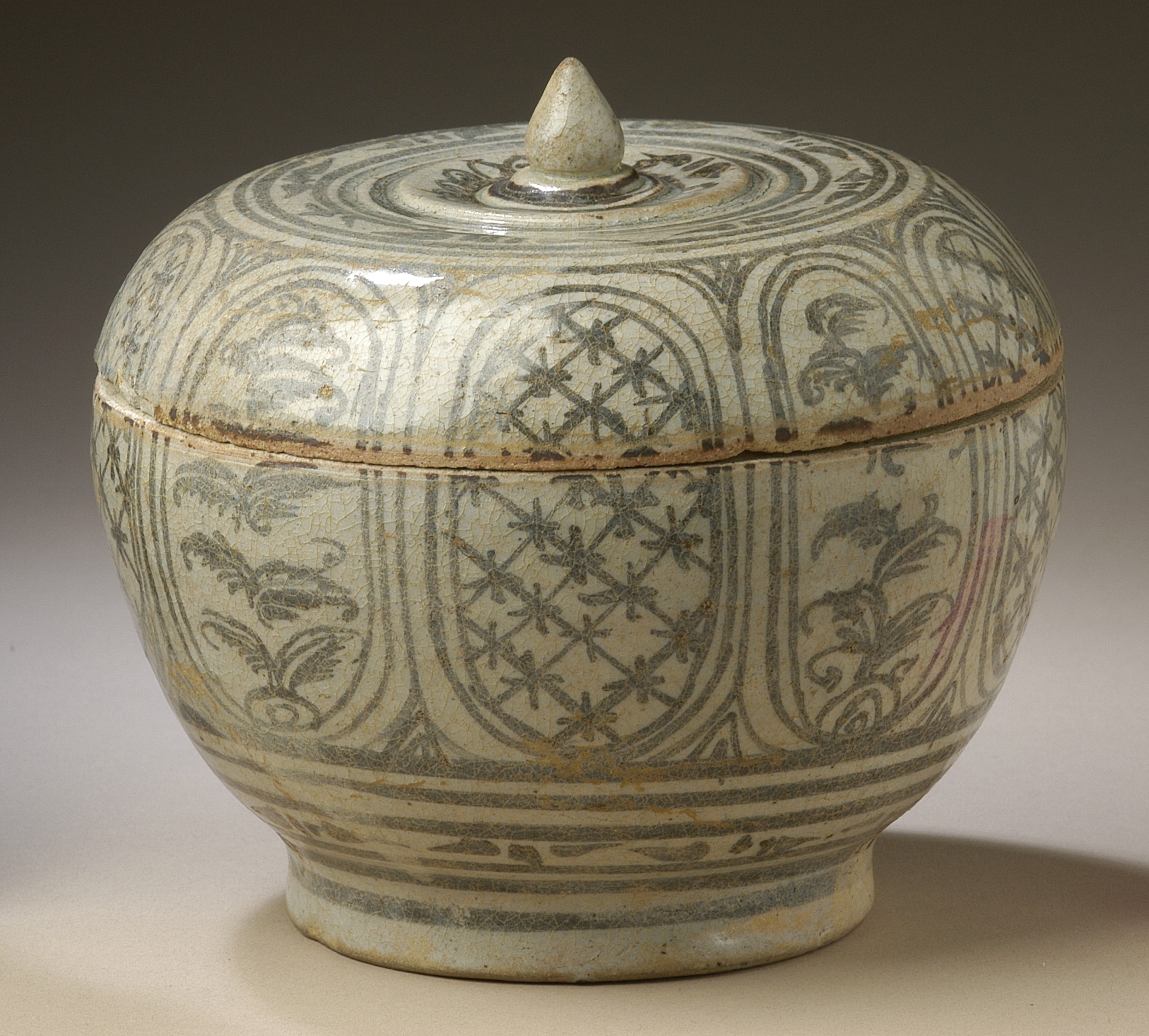
| Sawankhalok ware | Sukhothai, 14th century – 16th century | animal figurines, bowls, and boxes. Opaque or greenish glazed – creamy white slip – fine clay |
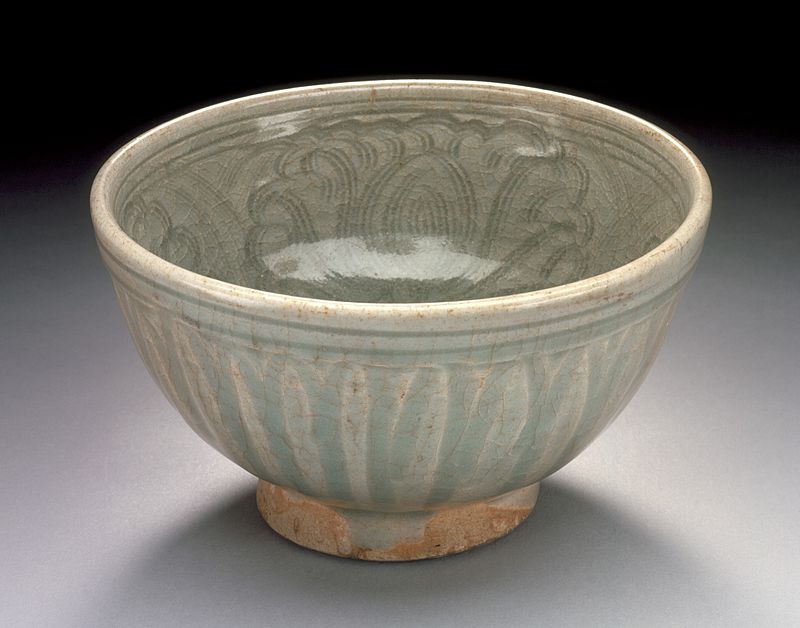 Si Satchanalai ware
Si Satchanalai ware
| Sukhothai, 14th century – 16th century | animal figurines, bowls, and boxes. Opaque or greenish glazed – creamy white slip – fine clay |
| Bangkok, 18th century – present | bowls, pedestal plates, roof tiles, and votive tablets. five colours, influenced from China |
For more information, please visit the following link:
https://en.wikipedia.org/wiki/Thai_ceramics
Thai Alphabet Drawing by Grandpa John and Grandson Kai, Part 1
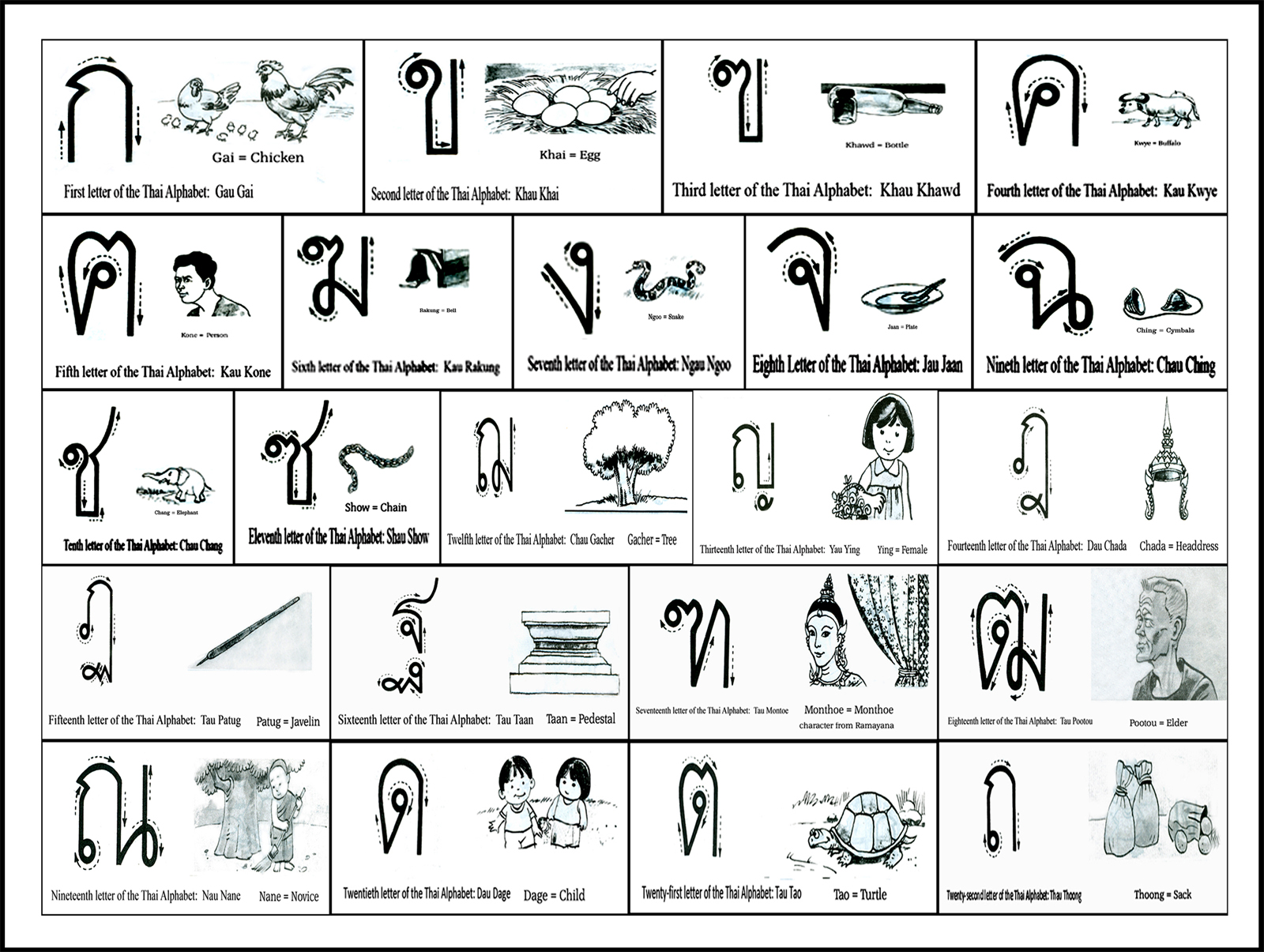
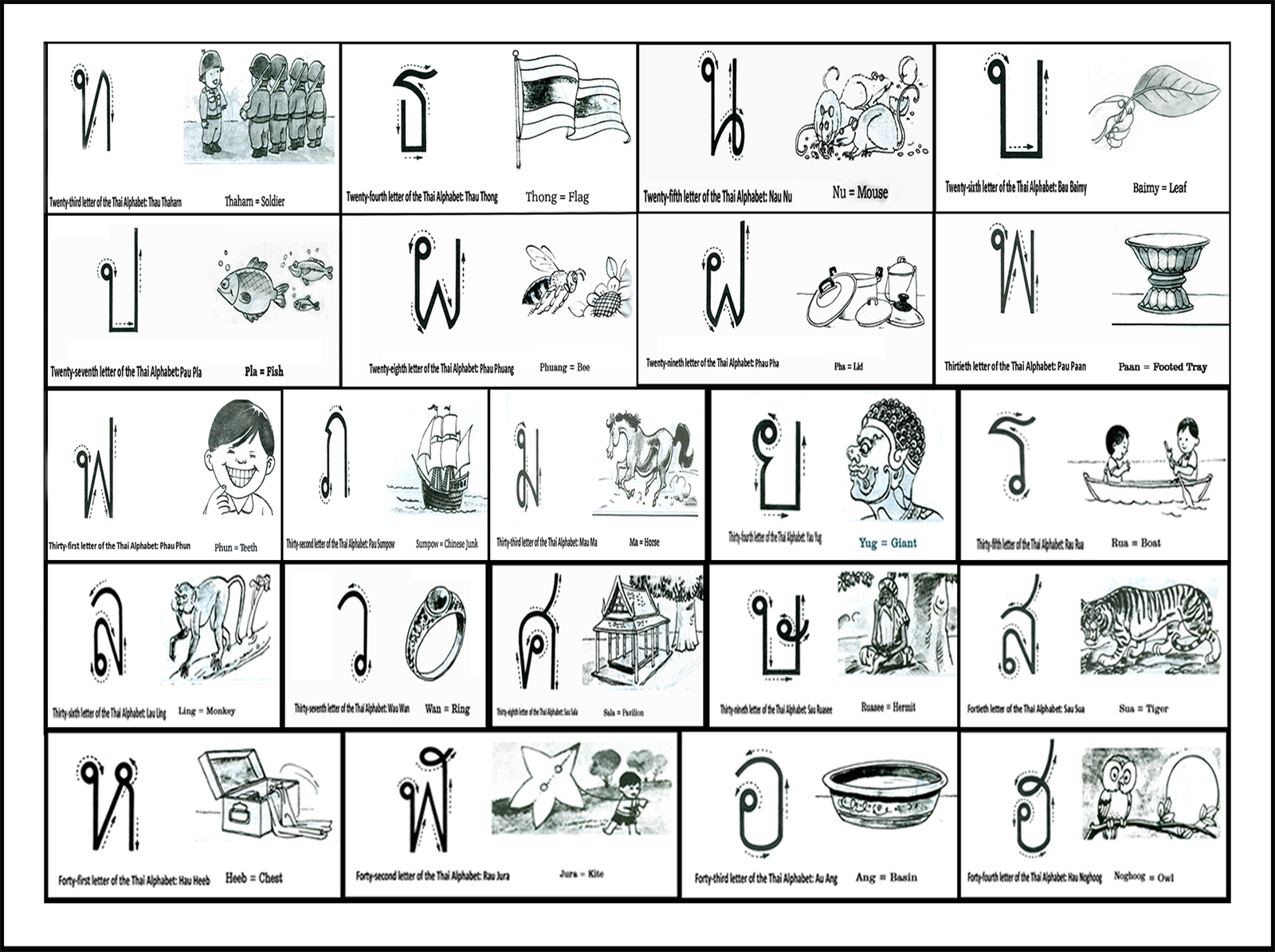
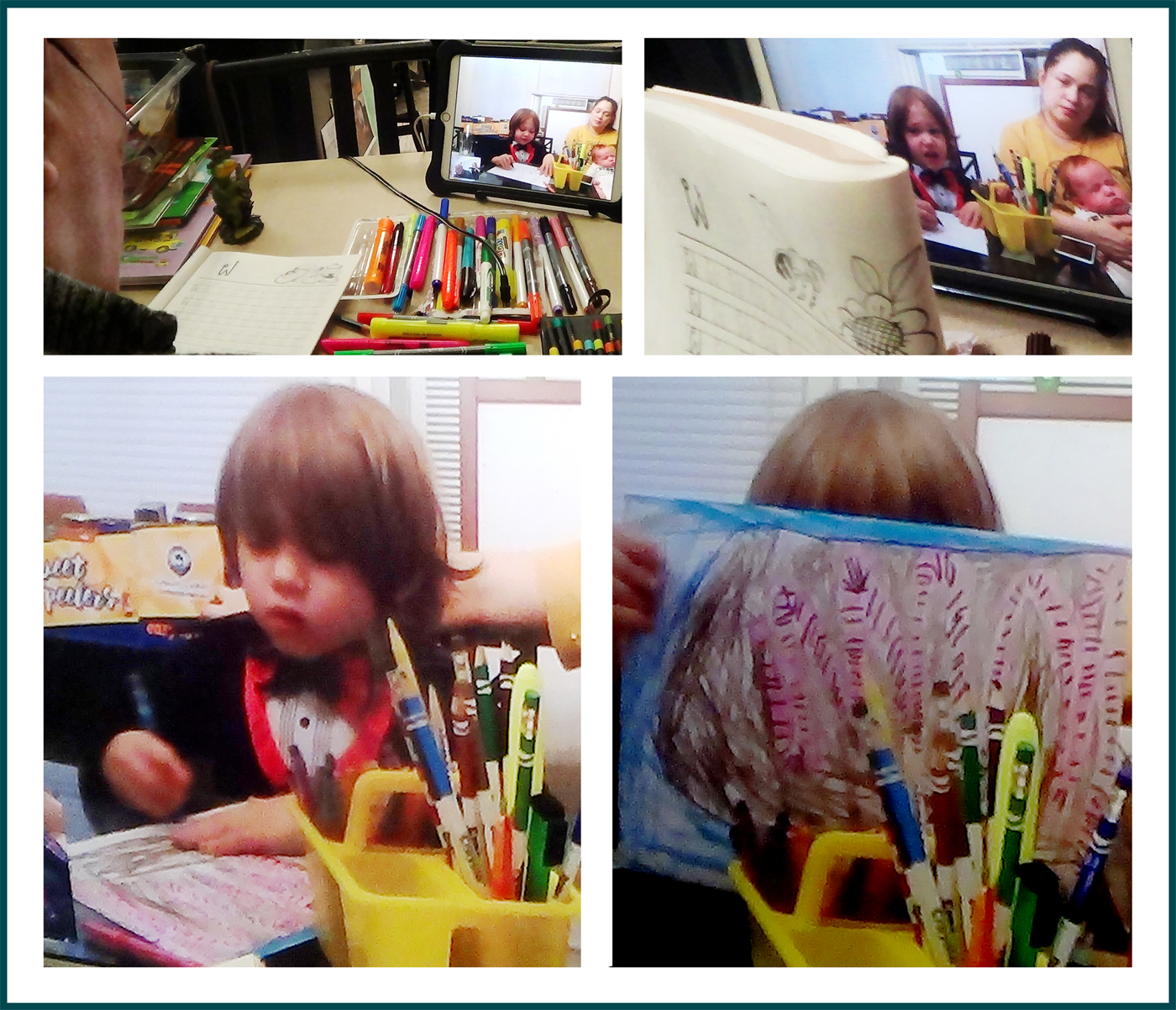
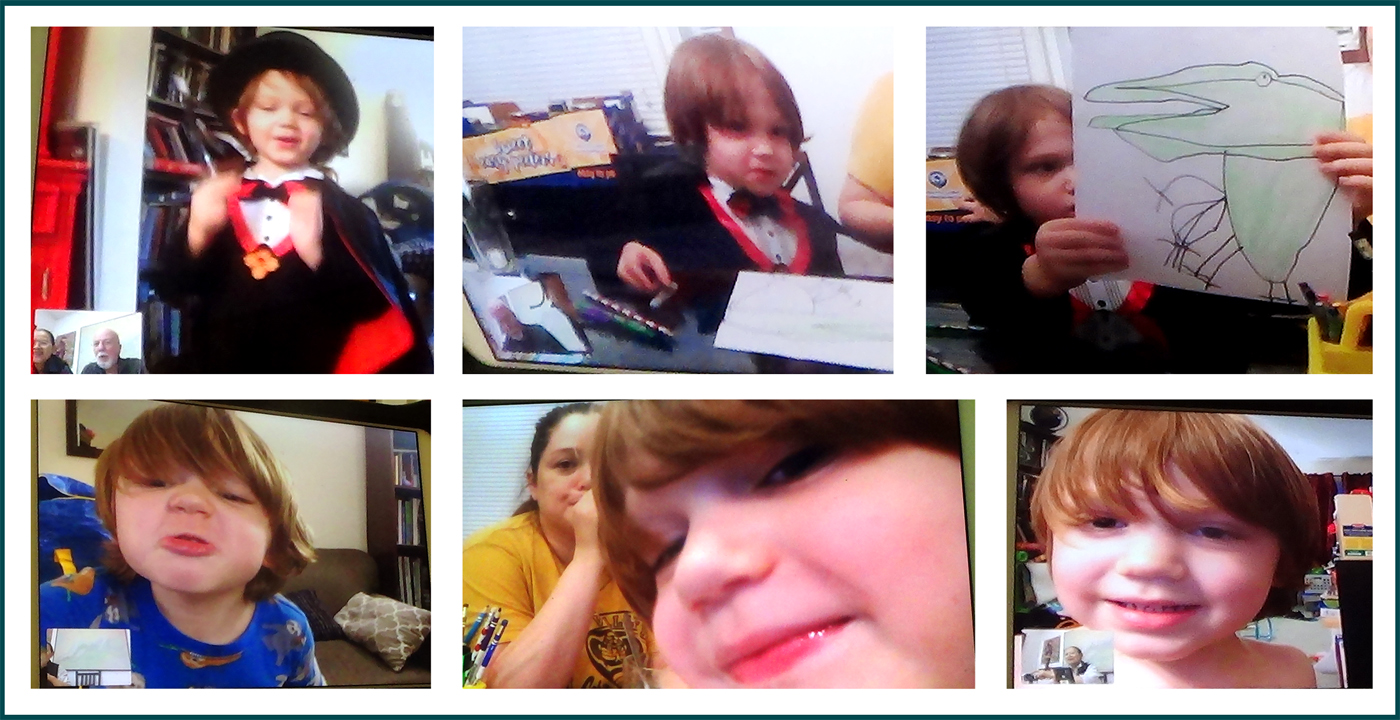



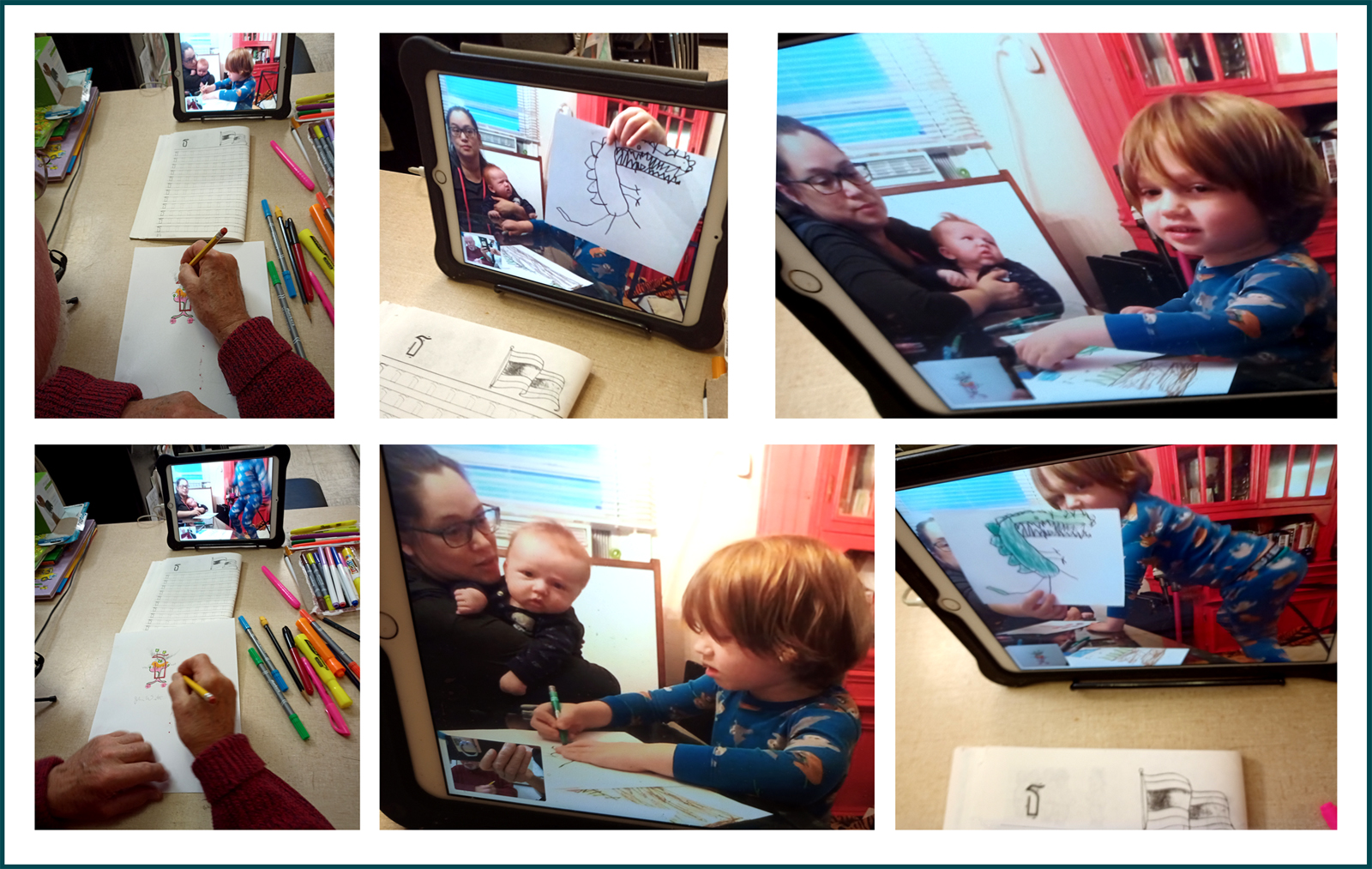

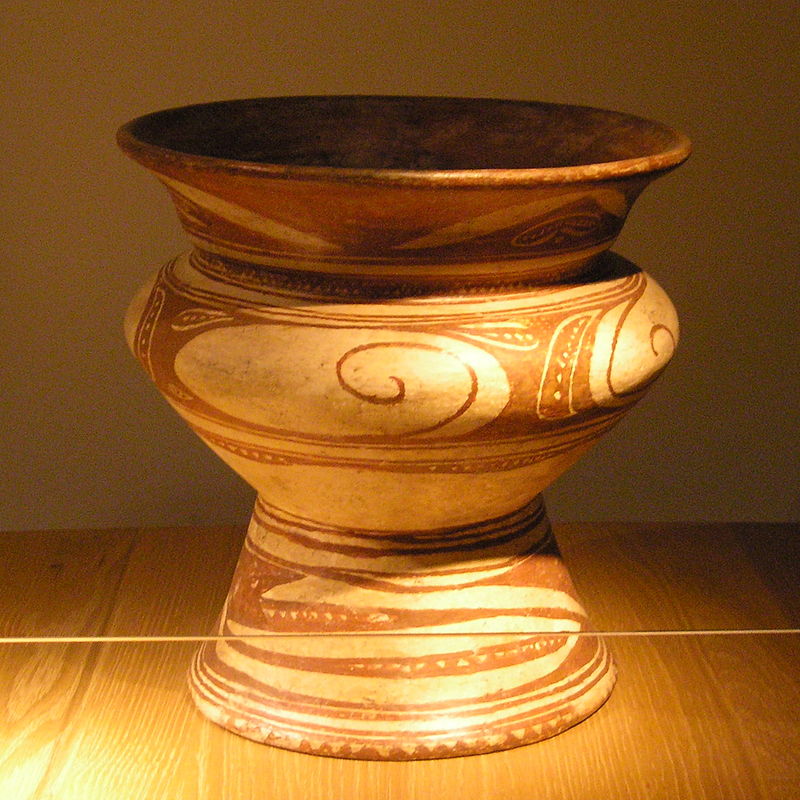
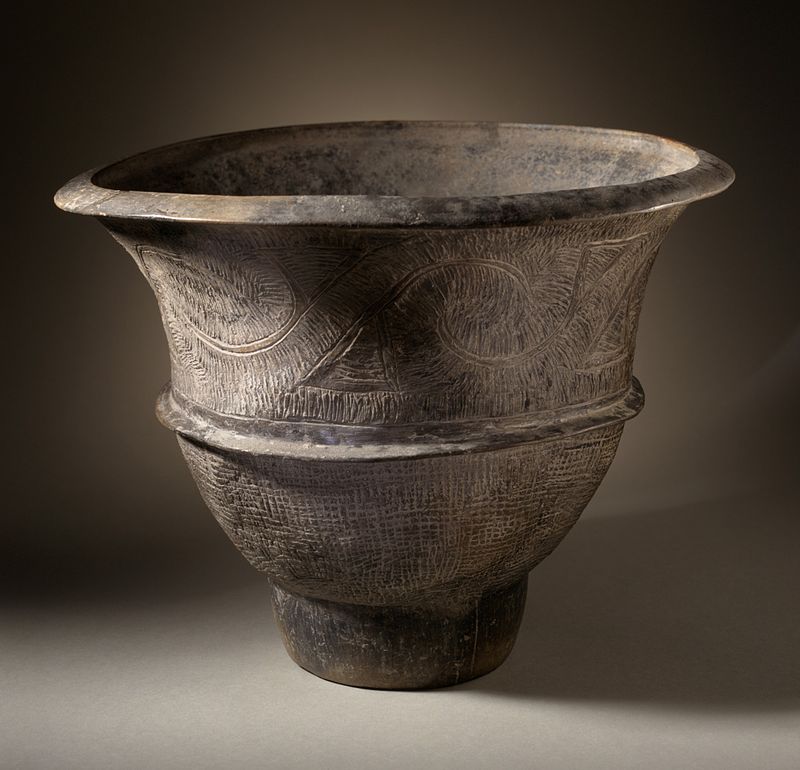

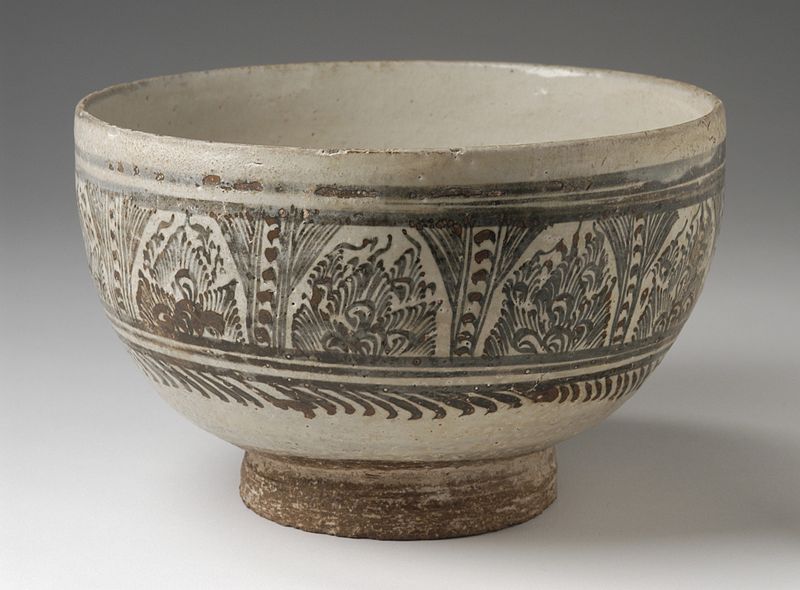
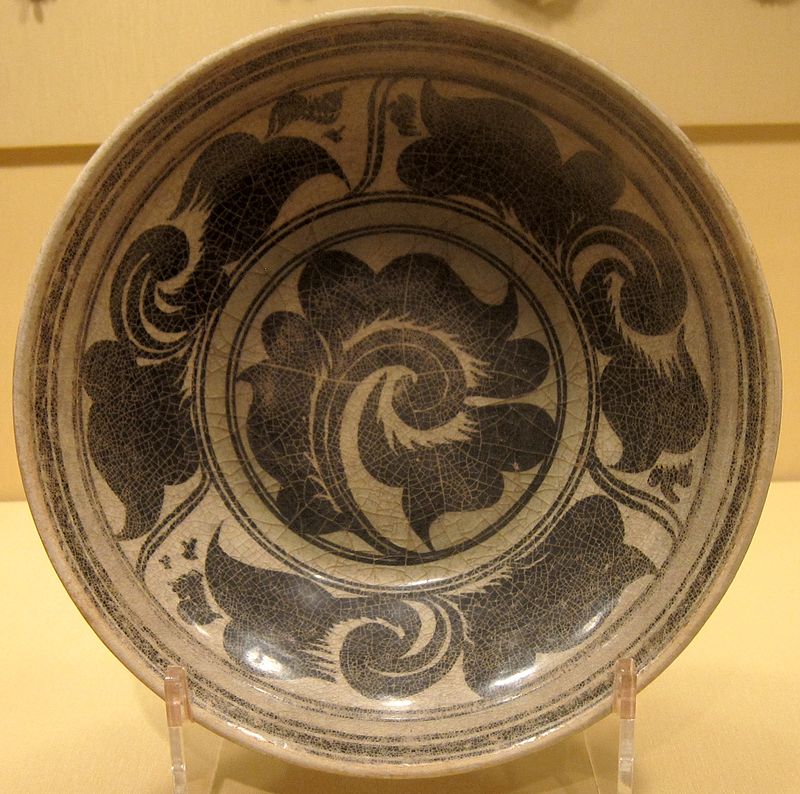
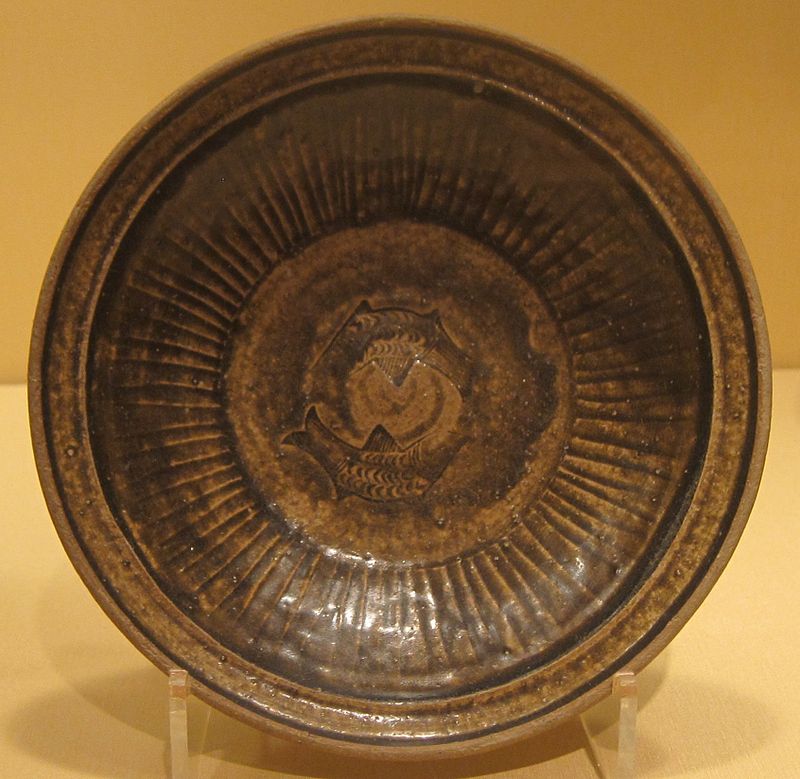
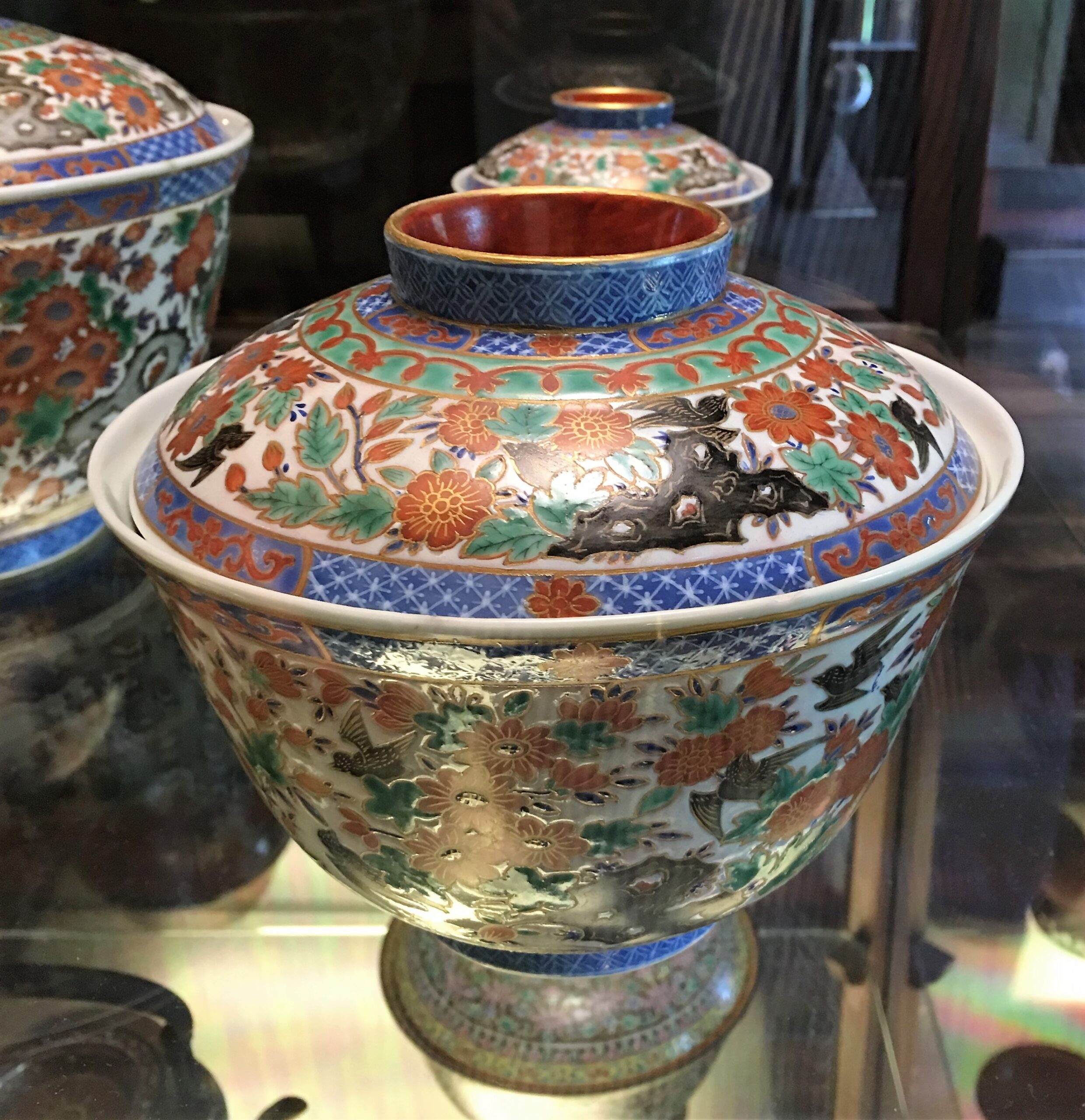 Benjarong
Benjarong
Leave a Reply